
VOL 1, No 3, MAY-JUL 2024
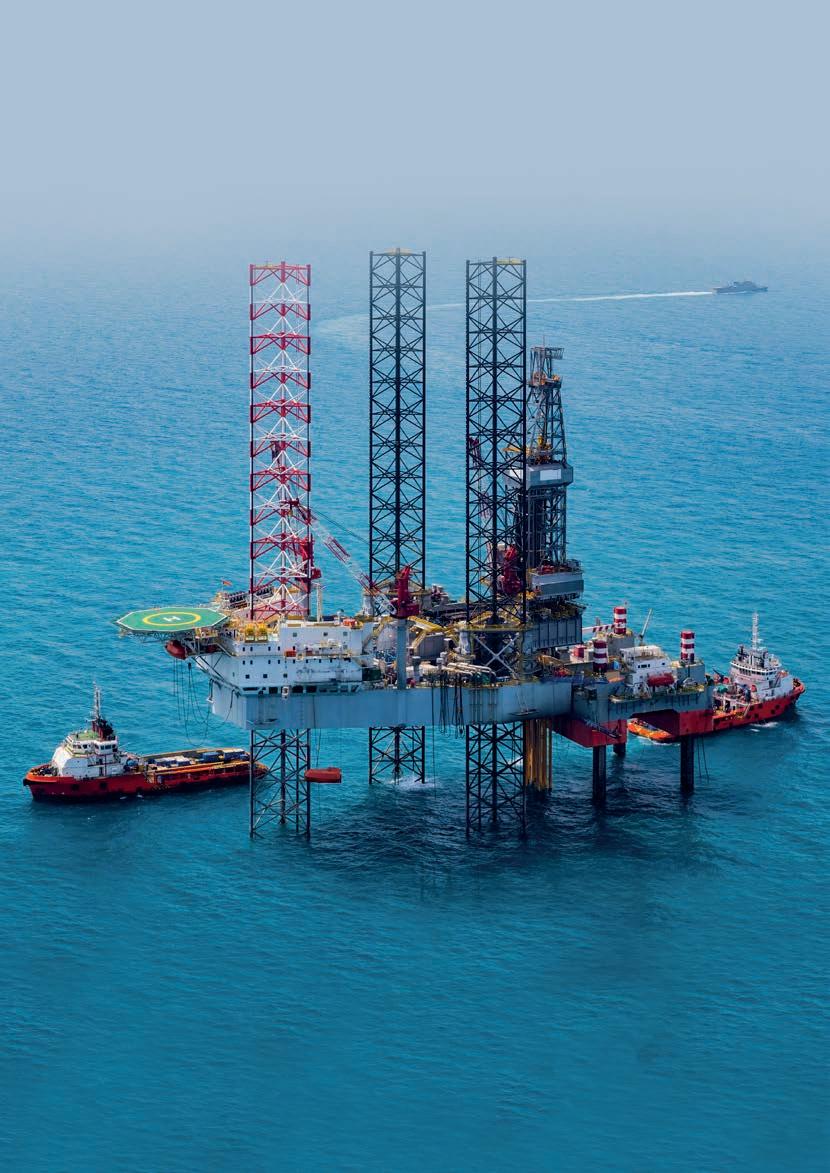
Govt Assures Maritime Boundary Agreements Won’t Affect National Sovereignty, Says Deputy Home Minister
US, Japan, Australia and Philippines to Hold ‘Maritime Cooperative Activity Green Marine: Decarbonising the Shipping Sector
COVER STORY
Indonesia, UAE Ink Pact on Cutting Marine Plastic Waste

THE VOICE OF ASEAN MARITIME AND OFFSHORE INDUSTRY
Published
RM10/ USD5
by:
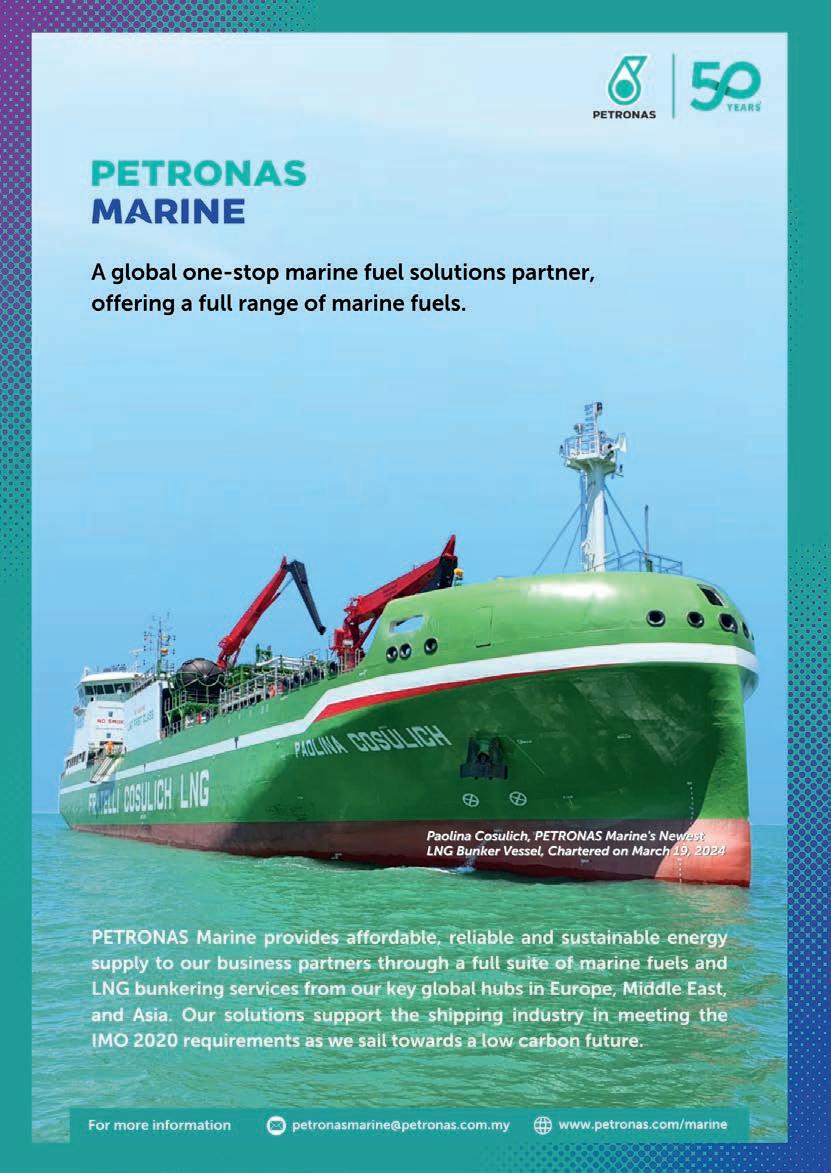


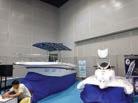
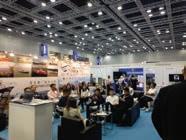


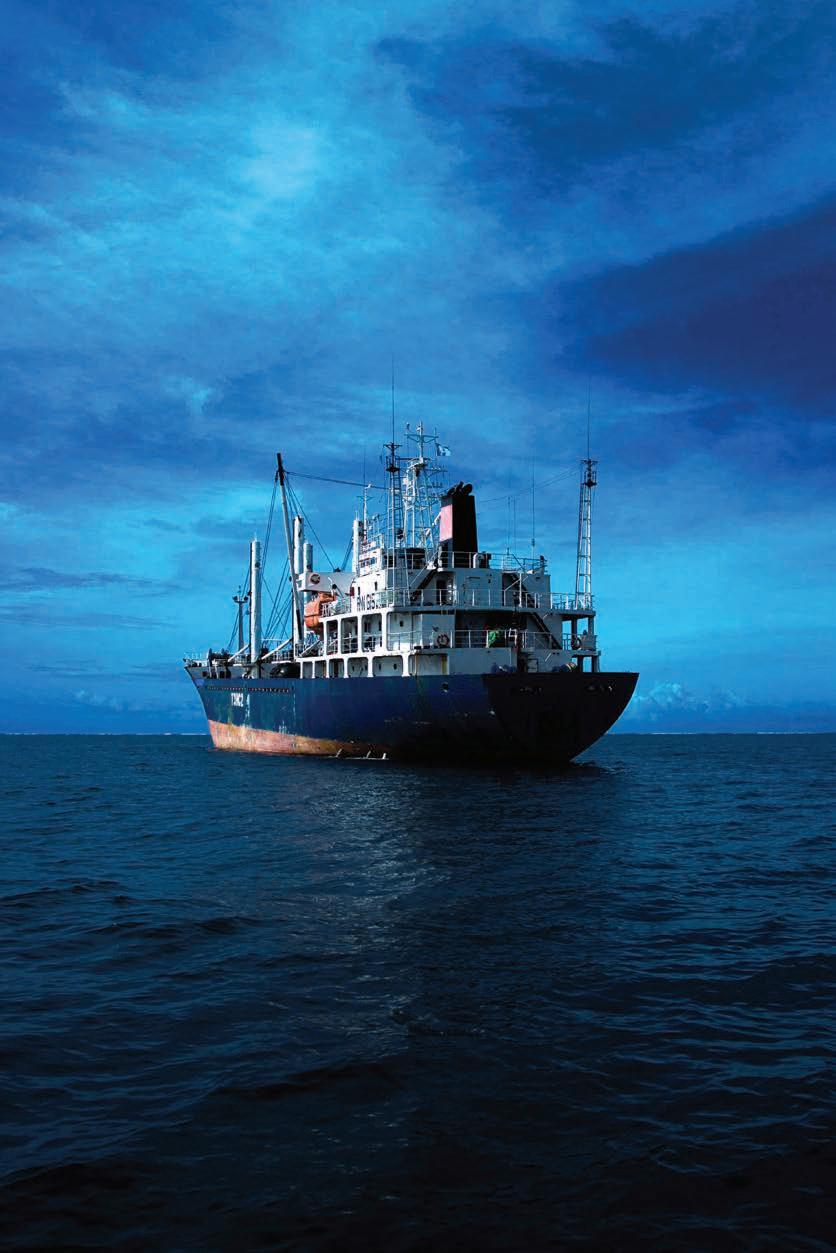
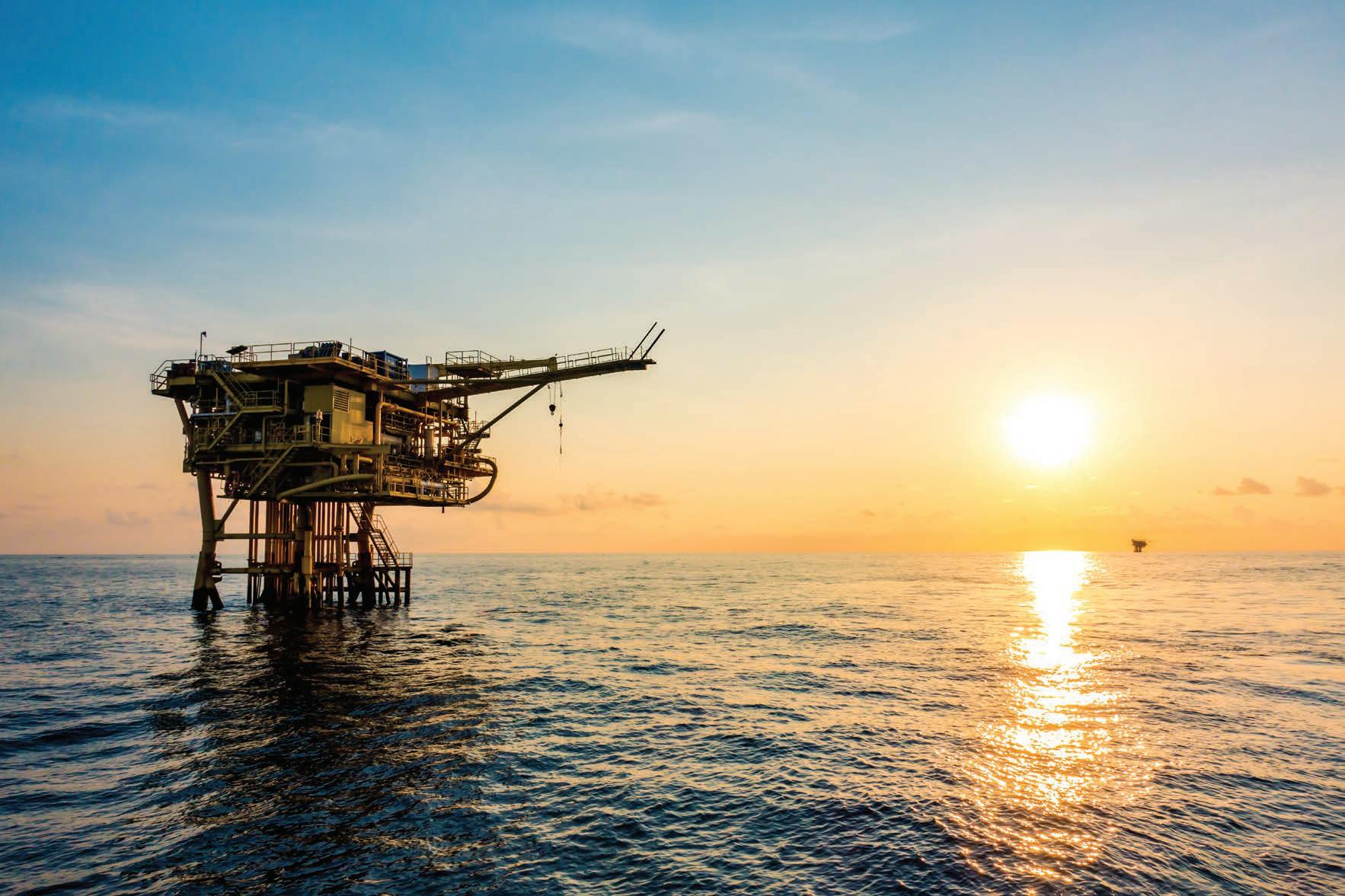


 Susan Tricia Editor
Susan Tricia Editor
The coalition government has pledged that any actions taken to address Malaysia's maritime borders with neighboring nations will safeguard sovereignty and national interests. Deputy Home Minister Datuk Mohamad Alamin emphasized the government's unwavering commitment to upholding national sovereignty in all matters. He affirmed that any agreements concerning maritime boundaries would be entered into only after thorough consideration of jointly resolved elements with the involved country, guided by the principles of boundary delimitation supported by robust legal and technical justifications.
Mohamad stated that the government has concluded nine maritime boundary agreements with neighboring nations. The most recent agreements include two treaties with Indonesia: the Straits of Melaka Treaty, focusing on the delimitation of territorial seas in the southernmost part of the Straits of Melaka, and the Sulawesi Sea Treaty, focusing on the delimitation of territorial seas in the Sulawesi Sea.
On the other hand, Home Minister Saifuddin Nasution Ismail announced that the Malaysian Maritime Enforcement Agency (MMEA) anticipates receiving the final two offshore patrol vessels (OPVs) within approximately two years. He explained that this projection is based on the ongoing construction progress, with OPV2 being 75% completed and OPV3 halfway done.
On behalf of the editorial team, thank you for your massive support of Maritime Voice ASEAN. Stay in touch with us at www.maritimeasean.com for more updates.
LinkedIn: maritimeasean Facebook: maritimeasean
Kenny Yong Susan Tricia
Atthira Zawana atthirazawana@asiafbi.com
Izyan Dzul izyandzul@asiafbi.com
Muhammad Fadzil design@asiafbi.com
Vanny Lim vanny@asiafbi.com
Jocelyn Ong jocelyn@asiafbi.com
FBI Publications (M) Sdn Bhd (1168942-P) Unit 9-3, Jalan PJU 5/6, Dataran Sunway, Kota Damansara, 47810 Petaling Jaya, Selangor. Tel: (+603) 5636 1952
Asia Palm Oil Magazine can in no way be held responsible for the content of such views nor can it be held liable for any direct or indirect damage that may arise from such views. The information in this magazine is regularly supplemented and/or modified. Asia Palm Oil Magazine reserves the right to make any changes with immediate effect and without providing any notice thereof

4 MARITIME VOICE ASEAN | MAY-JUL 2024
Published by Publication Manager Marketing Communication Assistant Editor Creative Designer Publication Executive
Directors The
opinions expressed in articles and announcements on this magazine reflect the views
the author(s)
reflect the views of the publisher.
Disclaimer
Board of
assertions and
of
and do not (necessarily)
PUBLISHER'S MESSAGE
C M Y CM MY CY CMY K

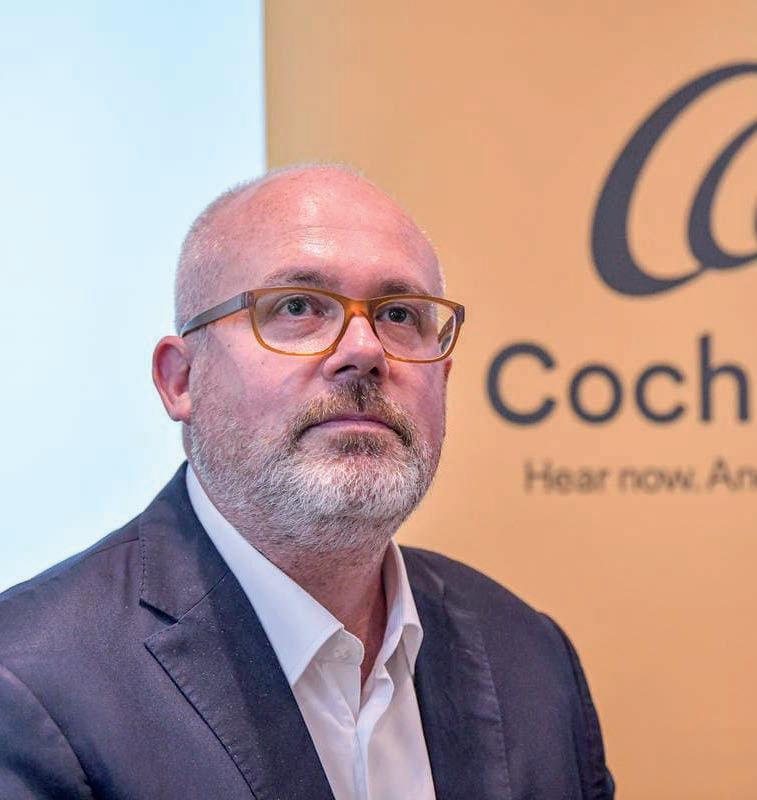
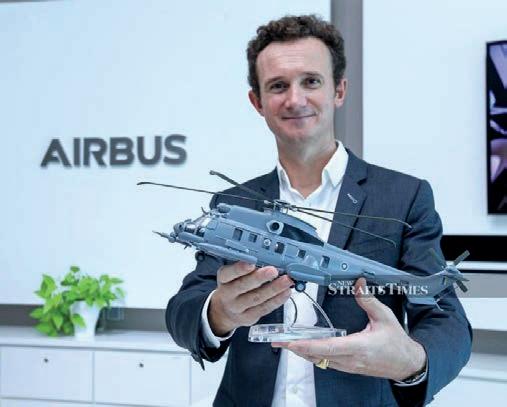
US, Japan, Australia and Philippines to Hold ‘Maritime
Indonesia
Rina
MARITIME VOICE ASEAN | MAY-JUL 2024 6 Australia Brings 23 Firms Looking to Invest in Maritime Decarbonisation, RE Sectors in Malaysia Airbus Helicopter Eyes Greater Share of Malaysian Market Govt Assures Maritime Boundary Agreements Won’t Affect National Sovereignty, Says Deputy Home Minister Airbus Helicopter Eyes Greater Share of Malaysian Market
Discusses Blue Food,
Cooperation with Singapore
CCS
Cooperative Activity’
Australia Brings 23 Firms Looking to Invest in Maritime Decarbonisation, RE Sectors in Malaysia Advanced Digitalization Discussed at Singapore Maritime Week Indonesia, UAE Ink Pact on Cutting Marine Plastic Waste 10 16 14 8 18 20 12 22 REGIONAL NEWS INTERNATIONAL NEWS Contents
and the World Bank Group Support Indonesia’s Green Maritime Transport
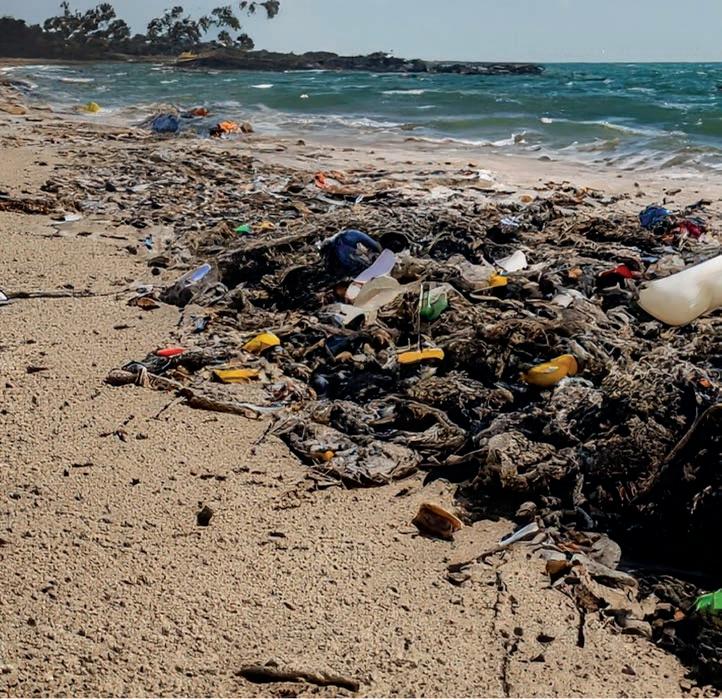
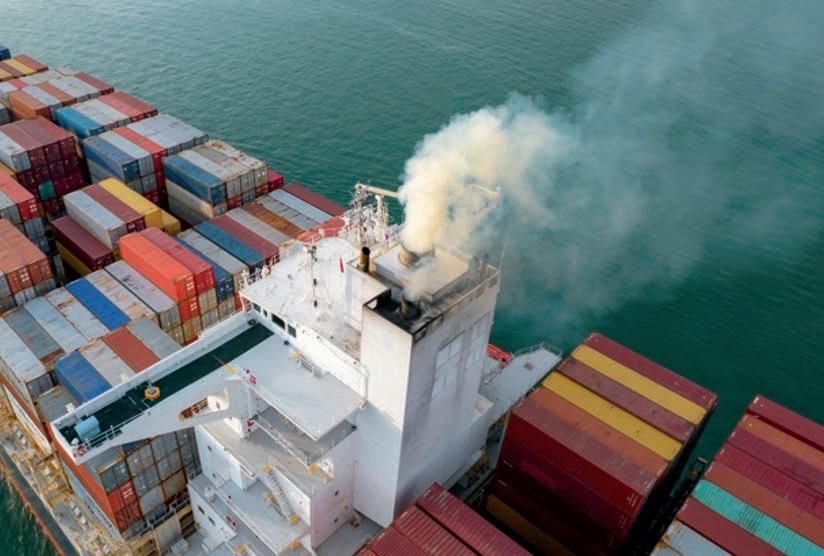

MARITIME VOICE ASEAN | MAY-JUL 2024 7 Saifuddin Nasution: Home Ministry Finalizes Acquisition of Four Helicopters Worth RM600m for MMEA Service Tax Set to Weigh on Marine MRO Price Competitiveness, Say Industry Associations Commentary: Nusantara Can Unlock Indonesia’s Maritime Potential Green Marine: Decarbonising the Shipping Sector Malaysia Can Benefit from Telenor’s 5G Technology Experience in the Maritime Sector — Fahmi MMEA to Receive Remaining 2 Ships Within 2 Years Hamid Retires as MMEA Chief After 42 Years of Service 24 40 32 34 26 30 28 NAVAL DEFENSE & MARITIME SECURITY PRODUCT & TECHNOLOGY NEWS OFFSHORE SPECIAL INSIGHT
Green Marine: Decarbonising the Shipping Sector Service Tax Set to Weigh on Marine MRO Price Competitiveness, Say Industry Associations
Indonesia,
UAE Ink Pact on Cutting Marine Plastic Waste
Australia Brings 23 Firms Looking to Invest in Maritime Decarbonisation, RE Sectors in Malaysia
Australia brought 23 companies seeking investment in maritime decarbonisation and renewable energy (RE) sectors to Malaysia as part of the Australia-Southeast Asia Business Exchange programme.
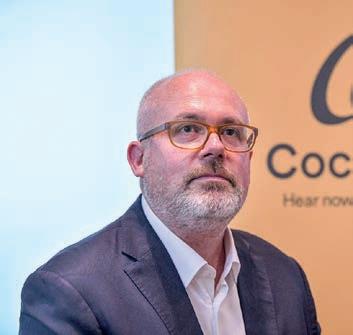
Australian assistant minister for Trade and Manufacturing
Senator Tim Ayres said the mission is to project Australia’s comparative advantage as a renewable energy superpower to support the Southeast Asian region’s transition to low-cost and zero-emissions energy. (Photo by Zahid Izzani/The Edge)
Its assistant minister for Trade and Manufacturing Senator Tim Ayres said the mission is to project Australia’s comparative advantage as a renewable energy superpower to support the Southeast Asian region’s transition to low-cost and zeroemissions energy.
“Australia has enormous capability in solar and wind and mining and resources capability. We have historically been a partner for Malaysia and countries in the region in the provision of coal and liquefied natural gas (LNG) to support the industrial development of the region,” he told reporters at a press conference here.
“We are a big exporter of iron ore and we possess all of the minerals that are required in the clean energy transition. So, we have a set of natural advantages and capital that we want to deploy in Australia to affect the lowest cost, fastest transition to be a renewable energy superpower for the region,” Ayres added.
Cochlear Malaysia vice president of manufacturing and logistics Samuel Pooranakaran said that Cochlear has so far invested RM50 million into Malaysia for its manufacturing site.
Ayres noted that Australia’s major shipping companies and heavy industry exporters recognise that they need to move to zero-emission ships as it is an important part of reducing their carbon footprint. As such, these companies are looking to engage with Malaysian companies to build low-cost, lowemissions ships, he said.
“That is why there is so much interest in Malaysia and Singapore, two of the great maritime hubs in one of the strongest maritime zones on the globe.
“I’m looking forward to the next coming years of investment and activities in this area. It’s going to deliver a lot of investments and a lot of jobs, and I want to make sure that Australia and the Asean region are in the race for that investment and jobs,” Ayres added.
Australia’s Cochlear to further expand manufacturing in Malaysia
As part of the business mission, Ayres visited Cochlear’s manufacturing, servicing and corporate facility here. Cochlear is an Australian company that manufactures and supplies implantable hearing devices.
Cochlear commenced its Malaysian operations in 2014 and employs more than 400 people at its Kuala Lumpur site, making it the third largest site in Cochlear’s global network, after Australia and the US.
MARITIME VOICE ASEAN | MAY-JUL 2024 8
REGIONAL NEWS

Cochlear is currently undergoing an expansion of its manufacturing site in Malaysia involving a capital investment of RM10 million, according to Cochlear Malaysia vice president of manufacturing and logistics Samuel Pooranakaran.
Source: theedgemalaysia.com
Pooranakaran said that Cochlear has so far invested RM50 million into Malaysia for its manufacturing site.
With the expansion, it is looking to increase its staff to 600 employees comprising highly qualified engineers and entrylevel workers.
In 2022-23, Malaysia was Australia’s second largest trading partner among Asean member states and eighth largest partner overall, according to the Australian Department of Foreign Affairs and Trade. Australia is Malaysia’s 10th largest trading partner. Total two-way trade in 2022 was valued at A$33.5 billion (approximately RM103.24 billion).
Established Australian retail brands in Malaysia include Aesop, Blackmores, Boost Juice, Cotton On, Harvey Norman, and King Living.
igus® The Anchor of Innovation
Resistant to salt water, lubrication-free, low-maintenance ... e-chain® and plain bearing technologies are pivotal in the maritime industry, enhancing machinery efficiency and reliability. e-chain® protect cables and hoses during movement, while plain bearings ensure smooth operations of mechanical components, crucial for ship functionality.
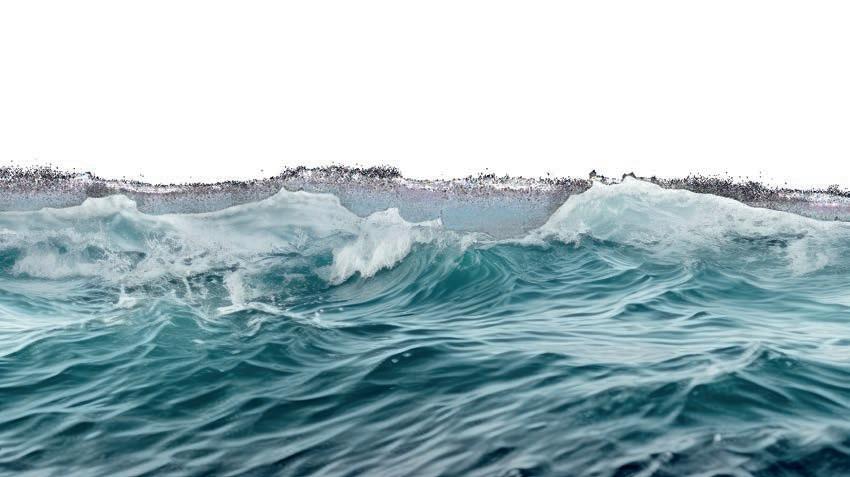
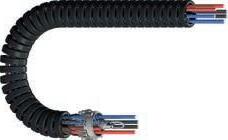




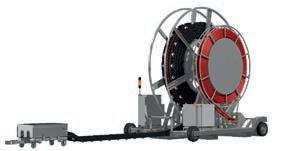
9
/maritime
igus® Malaysia Sdn Bhd Tel. +60378030618 my-info@igus.net motion plastics®
Govt Assures Maritime Boundary Agreements Won’t Affect National Sovereignty, Says Deputy Home Minister
The unity government has assured that every decision to resolve Malaysia’s maritime boundaries with neighboring countries will not compromise sovereignty and interests.
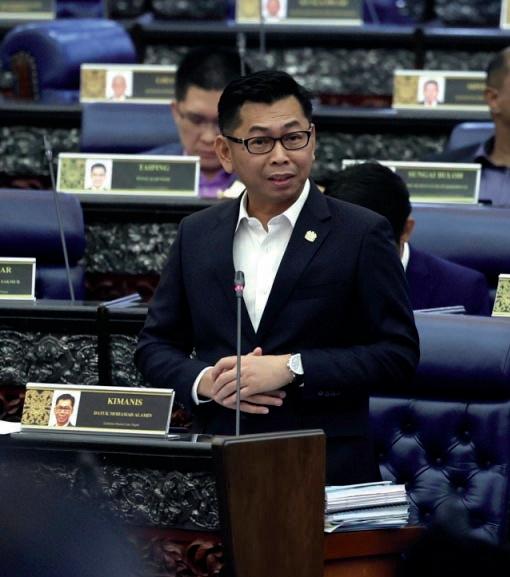
Home Minister

19, 2024. — Bernama pic
Deputy Home Minister Datuk Mohamad Alamin said the government has never and will never take lightly any decision involving issues of national sovereignty.
He said the government would only sign maritime boundary agreements after considering the joint resolution elements achieved with a particular country based on the principle of boundary delimitation with solid legal and technical justifications.
“The government is firm about this and will not compromise. To resolve Malaysia’s outstanding border issues with other countries, the government remains committed to conducting negotiations to produce solutions acceptable to both parties.
“This is crucial to ensure not only the country’s sovereignty is safeguarded but also to protect diplomatic relations between Malaysia and those countries,” he said during a question-andanswer session in the Dewan Rakyat.
He was replying to a question that Datuk Seri Dr Ronald Kiandee (PN-Beluran) asked about the list of maritime boundary agreements signed by the government and its follow-up actions.
Mohamad said the government had signed nine maritime boundary agreements with neighboring countries, the latest being two treaties with Indonesia, namely the Delimitation of the Territorial Seas of the Two Countries in the Southernmost Part of the Straits of Melaka (Straits of Melaka Treaty) and the Delimitation of the Territorial Seas of the Two Countries in the Sulawesi Sea (Sulawesi Sea Treaty).

“Both treaties were signed on June 8, 2023 at Seri Perdana, Putrajaya and all these agreements and treaties are in force and implemented by the government,” he added.
MARITIME VOICE ASEAN | MAY-JUL 2024 10
Source: www.malaymail.com
Deputy
Datuk Mohamad Alamin speaks at the Parliament in Kuala Lumpur March
REGIONAL NEWS

From Sea to Shore Trust our Performance MARINE ENGINE GENSET MASTERY KOHLER MARINE GENSET 7Kw-500KW UMW INDUSTRIAL POWER SERVICES SDN BHD 199901010349 (485249-D) Level 1B, No. 1, Jalan Rhenium 1, Presint 3 Bandar Industri Bernilai Tinggi Serendah 48200, Bandar Serendah, Selangor Darul Ehsan, Malaysia +6012 371 7863 +603 6421 8620 Contact us heong.swee.yew@umw.com.my Industrial Power Products and Solutions Distributed by UMW
US, Japan, Australia and Philippines to Hold ‘Maritime Cooperative Activity’
The defence forces of the United States, Japan, Australia and the Philippines will conduct “maritime cooperative activity” to support a free and open Indo-Pacific, the Philippines’ defence ministry said.
Naval and air force activities will be conducted within the Philippines’ exclusive economic zone on April 7, Manila’s defence ministry said in a joint statement.
The activity will strengthen the interoperability of the countries’ armed forces doctrines, tactics, techniques and procedures, the statement read.

The four nations reaffirm their position that the 2016 South China Sea Arbitral Tribunal Award is final and legally binding.
The maritime activity will happen days before a trilateral summit between the leaders of the United States, Japan, and the Philippines in Washington that will include a discussion of recent incidents in the South China Sea.
The Philippines and China had several maritime run-ins in March that included the use of water cannon and heated verbal exchanges, and have triggered concern about an escalation at sea.
China’s embassy in Manila did not immediately respond to request for comment.
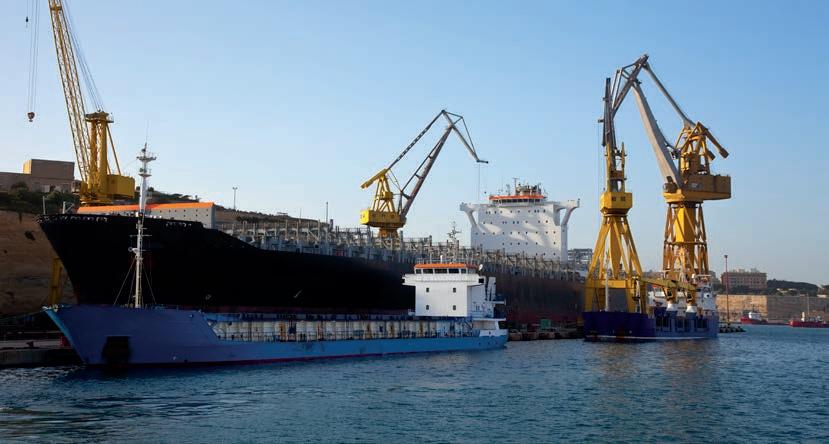
12 MARITIME VOICE ASEAN | MAY-JUL 2024 Source: www.malaymail.com INTERNATIONAL NEWS
The Philippines and China had several maritime run-ins in March that included the use of water cannon and heated verbal exchanges, and have triggered concern about an escalation at sea. — Reuters pic


From Sea to Shore Trust our Performance MARINE ENGINE GENSET MASTERY MAIN ENGINE MARINE GENSET 70hp-1000hp 50-300KWe UMW INDUSTRIAL POWER SERVICES SDN BHD 199901010349 (485249-D) Level 1B, No. 1, Jalan Rhenium 1, Presint 3 Bandar Industri Bernilai Tinggi Serendah 48200, Bandar Serendah, Selangor Darul Ehsan, Malaysia +6012 371 7863 +603 6421 8620 Contact us heong.swee.yew@umw.com.my Industrial Power Products and Solutions Distributed by UMW
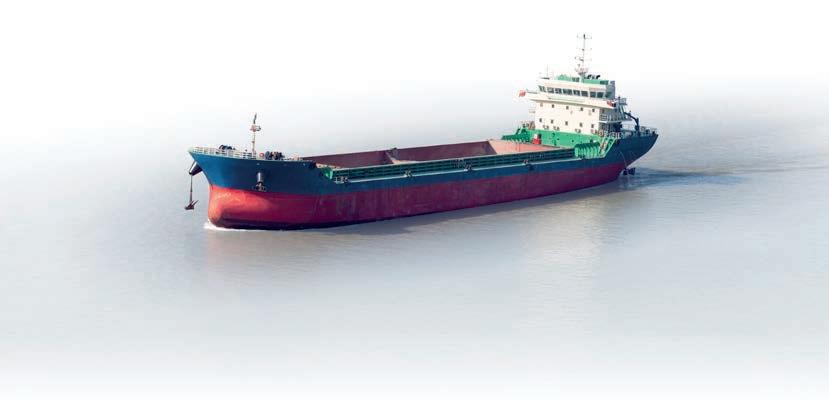
Indonesia Discusses Blue Food, CCS Cooperation with Singapore
Minister Wong expressed his interest in the various collaborations we are offering. His party is ready to conduct an early study for the collaboration.

Coordinating Minister for Maritime Affairs and Investment, Luhut Binsar Pandjaitan (left), issuing a press statement regarding preparations for the 10th World Water Forum (WWF) in Nusa Dua, Bali, on April 20, 2024. (ANTARA/Dewa Ketut S W/rst)
Coordinating Minister for Maritime Affairs and Investment, Luhut Binsar Pandjaitan, has invited cooperation in the fields of agriculture, blue food, and cross-border carbon capture storage (CCS) from Singapore.
“I talked to Minister Wong (Deputy Prime Minister of Singapore, Lawrence Wong) regarding many new opportunities for cooperation, such as the realization of cross-border Carbon Capture Storage (CCS),” the minister wrote in a post on his official Instagram handle @luhut.pandjaitan. Pandjaitan said he believes that cross-border CCS would be a significant milestone for Indonesia and Singapore in building low-carbon industries.
CCS is a global warming mitigation technology for reducing CO2 emissions in the atmosphere.
He said that such an effort would also be in line with Indonesia’s capacity, which is considered the fastest country in developing CCS regulations in the Asia-Pacific.
The minister also invited cooperation in the fields of agriculture and blue food, specifically developing seaweed farming in Indonesia
“Minister Wong expressed his interest in the various collaborations we are offering. His party is ready to conduct an early study for the collaboration,” he informed.
Pandjaitan met with Wong in Singapore. On the same occasion, he also met with Singapore Prime Minister Lee Hsien Loong.
Wong will replace Loong as Singapore’s prime minister in May 2024.
“I told them that Singapore and Indonesia have succeeded in significantly increasing cooperative relations in various fields, namely bilateral, regional, and multilateral,” Pandjaitan said.
He informed that Minister Wong also expressed his interest and seriousness in developing Bali as a wellness tourism destination through the construction of an international standard hospital.
“We agreed to continue and improve the good cooperation that has been established so far,” the minister added.
MARITIME VOICE ASEAN | MAY-JUL 2024 14 INTERNATIONAL NEWS
Source: en.antarnews.com

Airbus Helicopter Eyes Greater Share of Malaysian Market
Airbus Helicopters is looking to increase its share in Malaysia over the next five years particularly on the military helicopter market.
Airbus Helicopters Malaysia managing director Axel de Pascal said Malaysia is an important market for the company with a presence here for the past 20 years.
Airbus Helicopters, he added, expects an uptick in military demand for special operations, search-and-rescue (SAR) and tactical transport in the country and regionally.
This is where Airbus’s combat-proven multi-role H225M model helicopter is best suited for a wide range of mission requirements, he said.
To date, he said Airbus Helicopters has roughly 50 per cent market share out of 190 helicopters flying in Malaysia.
“We have been here (in Malaysia) for 20 years. We are there to answer and propose our products in which we believe that they are providing the best value for money in terms of operations, in terms of recurring costs,” de Pascal said at a media briefing here today.
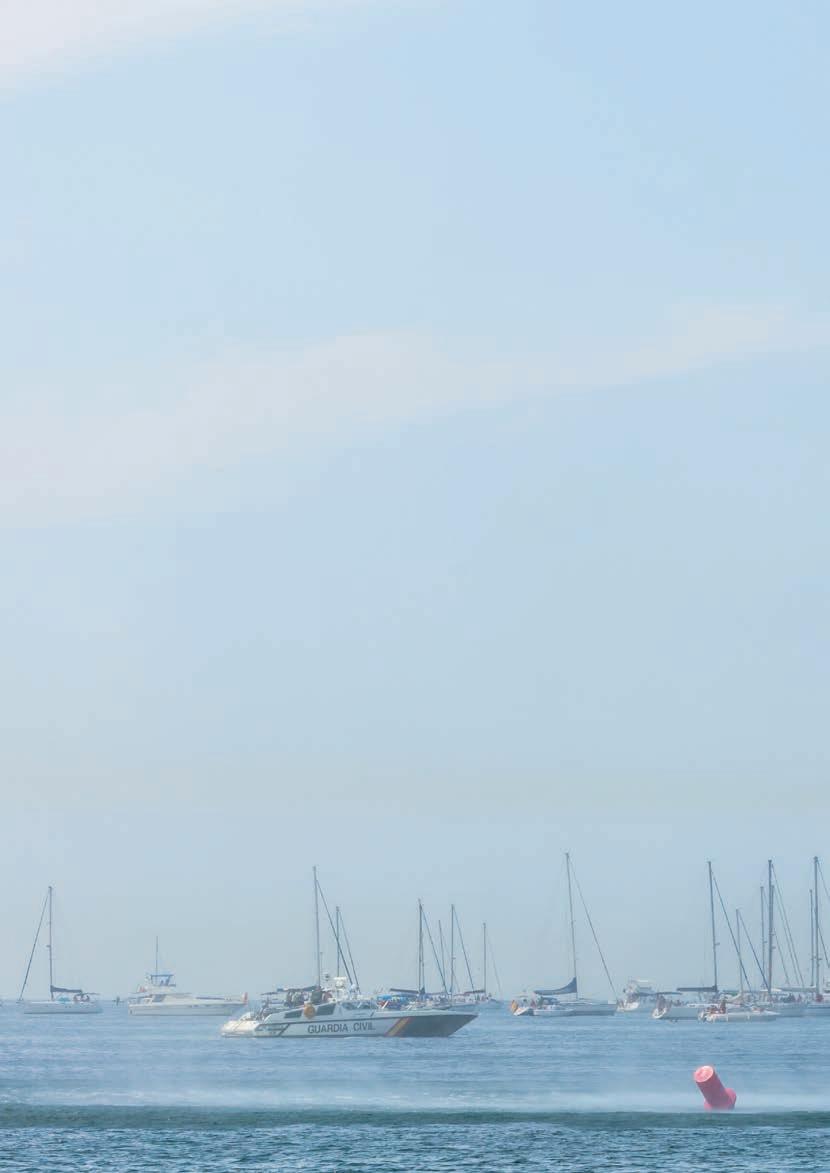
He said the H225M is contracted to 10 military forces worldwide with over 170 units delivered, more than 40 units on order and another 50 units supporting governmental agencies on search-and-rescue (SAR) missions.
Four of the 10 H225M military customers are in Asia Pacific including Malaysia.
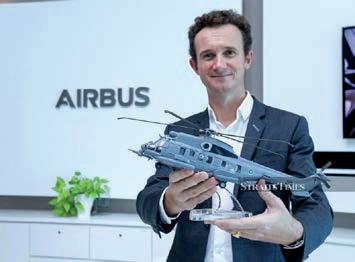
16 MARITIME VOICE ASEAN | MAY-JUL 2024
INTERNATIONAL NEWS
Airbus Helicopters Malaysia Managing Director, Axel de Pascal during media briefing at Airbus Helicopters Malaysia Sdn Bhd, Subang. STR/ AZIAH AZMEE
The Royal Malaysian Air Force (RMAF) currently operates 12 H225M at its base in Kuantan and Labuan.
The RMAF’s H225M fleet has been recognized as the world’s highest military flyer per aircraft, achieving more than 30,000 flight hours today.
De Pascal said Malaysia is already very familiar with the H225M capabilities and will be able to benefit from a common fleet with immediate operational readiness and reduced operational costs.
Airbus Helicopters is ready to put forth its H225M for the RMAF’s consideration when the time comes.
Under 2024 Budget, funding has been allocated for RMAF to acquire 12 helicopters.
In December 2023, RMAF announced that the procurement of the new helicopters would be made through an open tender process by early 2024.
“We’re confident that the additional H225M will complement RMAF’s existing fleet. With a ready ecosystem in place, any

additional asset will result in considerable increase in efficiency for the air force at all levels,” de Pascal said.
He did not comment on the possibility that Airbus helicopters could be selected as an additional fleet for the Malaysian Maritime Enforcement Agency (MMEA).
He, however, said the European helicopter manufacturer is always ready to meet the requirements needed by the country.
“I cannot comment on the government’s decision to select the type of helicopter. What I can say is that wherever there’s a requirement expressed by the Malaysian government, we are there.
Home Affairs Minister Datuk Seri Saifuddin Nasution Ismail on Monday said MMEA would receive four new helicopters worth RM600 million once the ministry finalizes the purchase of these aircraft.
Saifuddin said the next step is to visit the premises of the shortlisted helicopter manufacturing companies before making a decision.
17 MARITIME VOICE ASEAN | MAY-JUL 2024
Source: www.nst.com.my
Advanced Digitalization Discussed at Singapore Maritime Week

The Maritime International Advisory Panel (IAP) held its third annual meeting on April 16, 2024, during the Singapore Maritime Week 2024. This year, the Maritime IAP held in-depth discussions on the key developments in the maritime sector, including decarbonization, green financing, digitalization and cybersecurity.
Established in 2022 by the Ministry of Transport (MOT) and the Maritime and Port Authority of Singapore (MPA), the Maritime IAP aims to seek international perspectives on key long-term trends and developments that will shape the maritime industry. It comprises global leaders from the maritime sector, adjacent industries and academia, and is chaired by Chee Hong Tat, Minister for Transport and Second Minister for Finance. Local industry and union leaders also joined the meeting to share their perspectives.
The Maritime IAP highlighted that despite geopolitical uncertainties and supply chain shifts, there were significant opportunities for the global maritime sector in the following areas:
• Accelerating the green transition towards a low- and zerocarbon future, supported by important enablers such as financing for green shipping;
• Deepening the utilization of technology and digitalization while strengthening cyber resilience; and
• Training and re-skilling the maritime workforce to take on the new job opportunities of the future.
Singapore’s position as a trusted and established maritime eco-system could catalyze green financing solutions, unlock the benefits of deeper utilization of technology and data, and position it as a training hub to develop the skills needed by the future maritime workforce.
Against the backdrop of global uncertainties, the Maritime IAP highlighted that Singapore could be an important trade and maritime intermediary, given its status as a neutral, trusted, and leading maritime hub. With growing trade to emerging regions as trade flows shifted, the panel believed Singapore would be an important conduit for new trades going forward. The panel further suggested for Singapore to become a trusted maritime technology hub for the development, installation, and accreditation of critical technologies, especially for those fitted onboard ships.
The Maritime IAP noted that amidst the ongoing green transition, there would be competing demands for various lowor zero-carbon fuels (e.g. hydrogen, ammonia, methanol) from other sectors.
The Maritime IAP highlighted the need to draw on a wide range of green financing instruments and investments to catalyze change, address hurdles and accelerate the sector’s green transition. The panel also noted that financial institutions were willing to provide lending for suitable projects to support maritime decarbonization with sufficient assurance that the default risks were managed. To address the financing needs of
18 MARITIME VOICE ASEAN | MAY-JUL 2024 INTERNATIONAL NEWS

the sector, the panel suggested for maritime stakeholders to pool their needs, while demand aggregation would help smaller companies gain better access to suitable solutions and financing, and also allow financial institutions to better determine and manage the risks involved.
The Maritime IAP discussed the importance of further harnessing new technologies, such as generative artificial intelligence (GenAI), in the maritime domain to reap greater productivity, efficiency, safety and sustainability. Clear use cases included autonomous shipping, vessel collision avoidance, ship-to-shore connectivity, and drone services. The Maritime IAP highlighted the significant potential to utilize data in the maritime domain for multiple uses and benefits, including optimizing vessel voyage planning and energy consumption, and for trade and offsetting uses in the carbon markets. Digital twins should be leveraged to anticipate future crisis and futureproof assets as well as develop preparedness and response capabilities.
The Maritime IAP stressed the necessity of cybersecurity and cyber-resilience as digitalization of the maritime industry grew and maritime systems became more inter-linked. An ecosystem approach was needed as incidents in the maritime sector could have regional and global implications; entities could not afford to work in silos.
Beyond technical competencies, there was a need to encourage information-sharing between entities and inculcate a culture where high cyber standards and hygiene were ingrained at all
levels. The Maritime IAP noted that cybersecurity resilience involved regular risk assessments, mapping of digital assets, and developing an inventory of all information technology and operational technology assets within each organization.
The Maritime IAP recommended that Singapore as a maritime hub could forge regional and global partnerships in technology development and cyber-resilience, in the areas such as operations (e.g. information sharing about threats and mitigation measures), technology (e.g. test lab for solutions and inter-operability platforms), standardization of relevant regulations and standards and development of cybersecurity talent pipeline.
The Maritime IAP, as well as local industry and union representatives, underscored the importance of investing in attracting, developing, and retaining the talent pool in the maritime industry. As the industry pursued the green transition as well as digitalization and automation, the Maritime IAP recommended establishing clear and regular communication with the maritime workforce on the need for upskilling, reskilling and job redesign in advance. Governments and industry should also collaborate with academic institutions to ensure that curricula continued to be updated with the relevant skills required in the maritime sector for the workforce to be futureready.
19 MARITIME VOICE ASEAN | MAY-JUL 2024 Source: www.marinelink.com
Rina and the World Bank Group Support Indonesia’s Green Maritime Transport
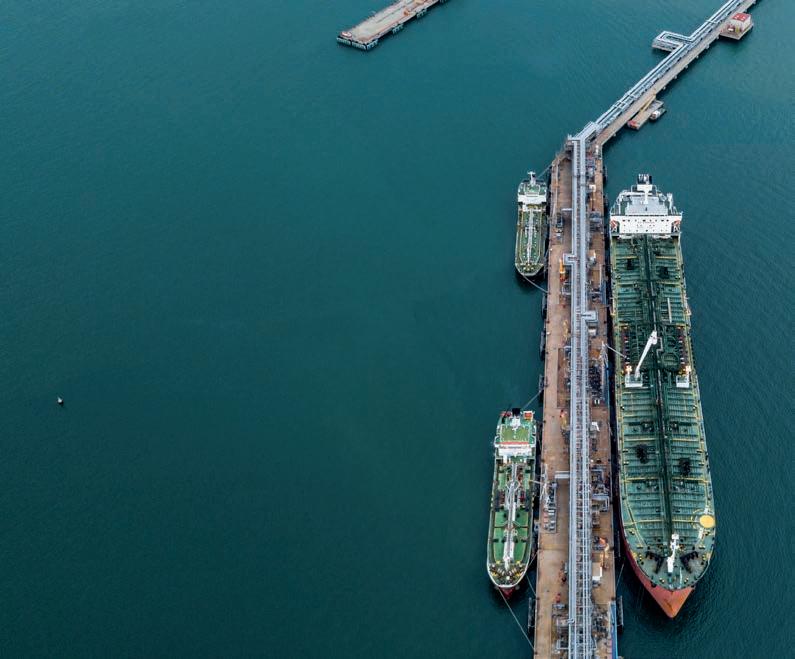
RINA has recently secured a contract with The World Bank Group to support the Ministry of Transport of the Republic of Indonesia in promoting a green and climate-sound development in Indonesia’s port infrastructures and maritime transport.
Funded by the Korean Green Growth Trust Fund (KGGTF), the World Bank’s activity on ‘Greening the Maritime Transport Sector in Indonesia to Promote an Environmentally- and Climate-Sound Development’ aims to support the Indonesian Ministry of Transport to ensure balancing economic growth with ecological sustainability within ports and maritime transport sector.
The maritime transport sector plays a pivotal role in Indonesia’s economic development, facilitating trade and connectivity and providing important support to various industries. However, the sector’s growth has raised concerns about its environmental and climate impact. Indonesia needs strategic interventions to align maritime activities with sustainable practices.
To remind, the P4G-Getting to Zero Coalition report
“Shipping’s energy transition: strategic opportunities in Indonesia” found that Indonesia has several opportunities to leverage the global transition to zero emission marine fuels towards key national objectives. However, achieving this will require targeted action in order to unlock these opportunities.
The project will study the ships, shipping, and port sectors to provide a roadmap for the Indonesian Ministry of Transportation to enable a green energy transition.
Specifically, the study will assess the gaps, challenges, and opportunities in greening the ports, ships, and shipping sector and enhance the efficiency and sustainability of port infrastructures and maritime transport across Indonesia.
Additionally, the work will include a high-level regulatory, policy, and institutional overview of greenhouse gas (GHG) emissions and related aspects of the ships and shipping sector.
20 MARITIME VOICE ASEAN | MAY-JUL 2024 Source: safety4sea.com INTERNATIONAL NEWS
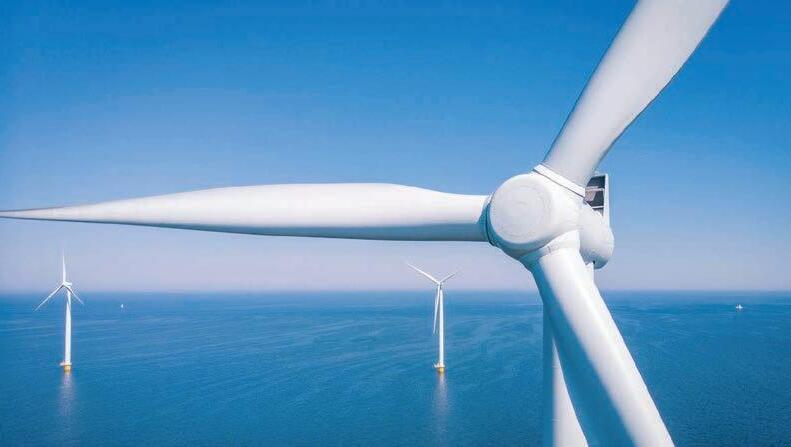
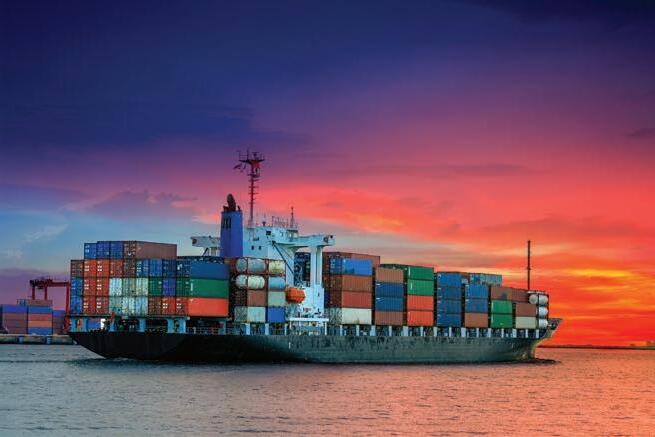
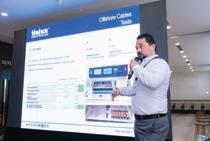
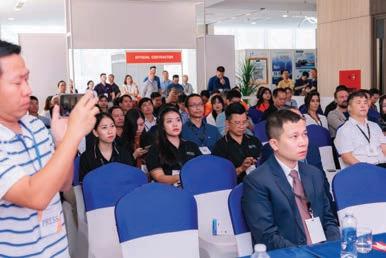



Indonesia, UAE Ink Pact on Cutting Marine Plastic Waste
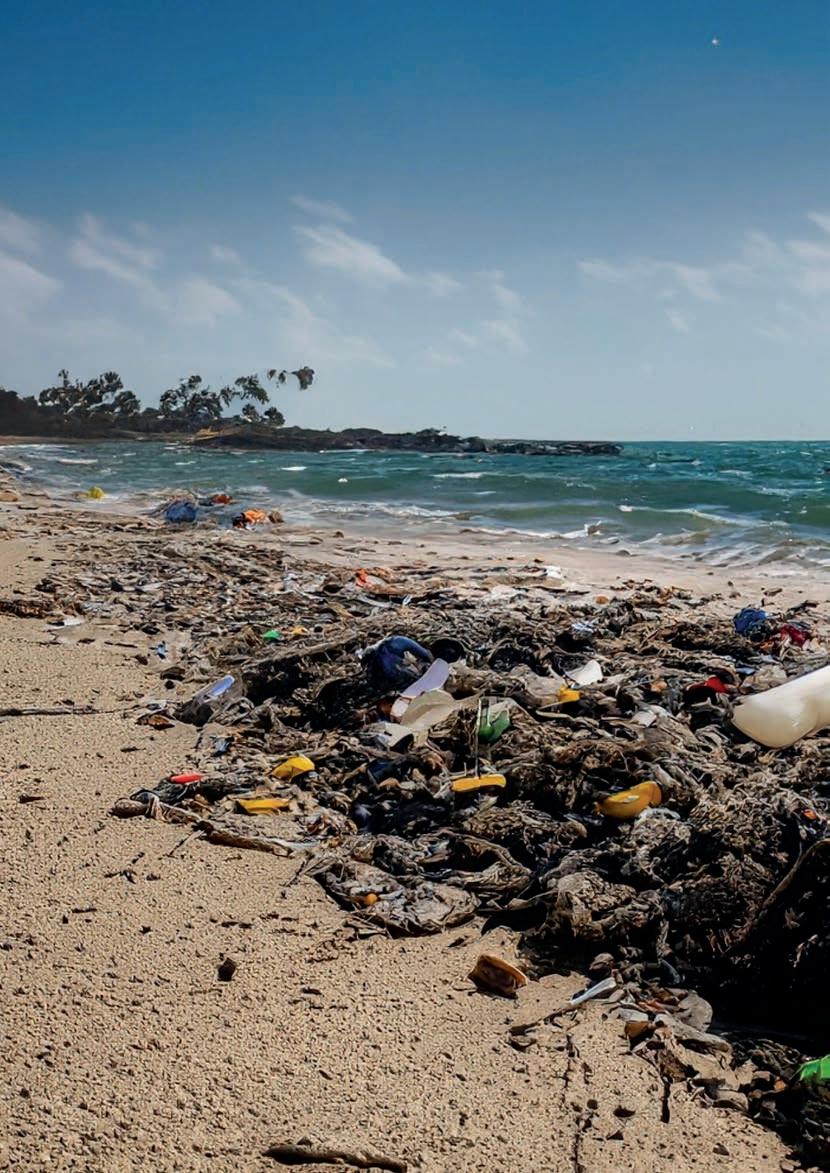
Indonesia and the United Arab Emirates (UAE) have signed a memorandum of understanding (MoU) on collaboration to reduce plastic waste leakage into Indonesian waters.
The MoU was inked by officials from the Indonesian Coordinating Ministry for Maritime Affairs and Investment and the Emirati Ministry of Climate Change and Environment in Abu Dhabi, the UAE, on April 23, 2024.
“The signing of this MoU marks an important milestone of Indonesia-UAE cooperation in the reduction of plastic waste leakage into the ocean and reflects our shared commitment to environmental management,” deputy for environmental and forestry management at the Indonesian Maritime Affairs and Investment Coordinating Ministry, Nani Hendiarti, said in a statement released by her ministry.
22 MARITIME VOICE ASEAN | MAY-JUL 2024 INTERNATIONAL NEWS
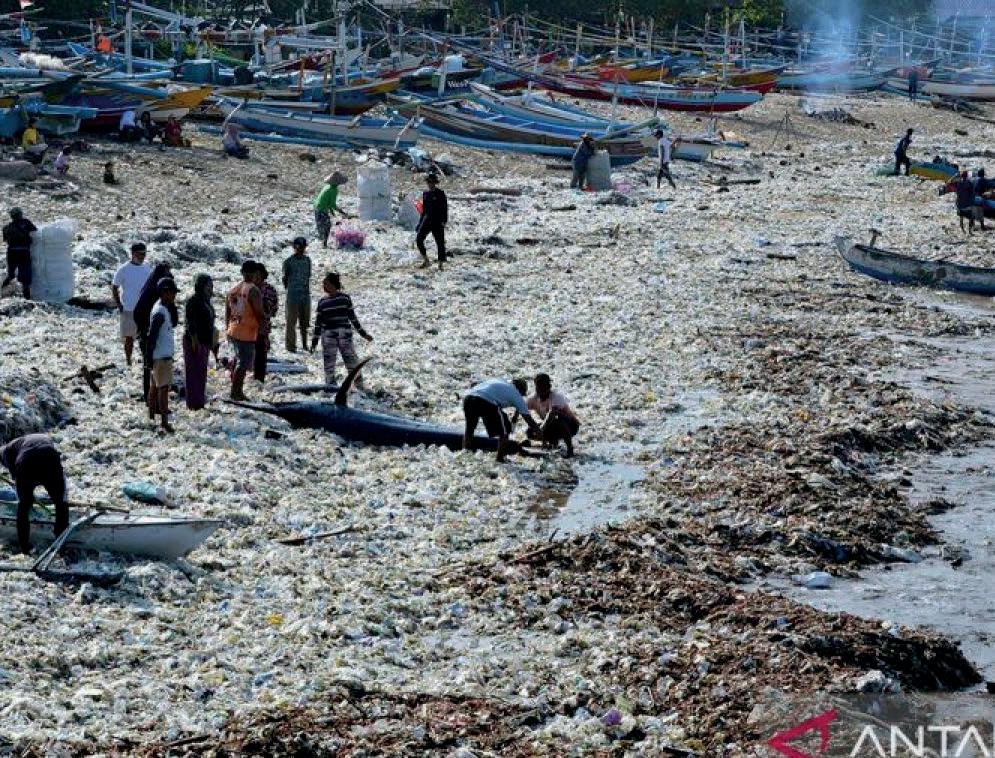
She added that Indonesia, as a country with a long coastline and several islands, is fully aware of the need to deal with the challenges presented by plastic pollution, which has emerged as a transnational issue.
She informed that since 2018, her office has been implementing the national action on marine waste, under which the nation has managed to reduce plastic waste leakage by 42 percent and is planning to further cut waste by 70 percent.
“We have been striving to improve infrastructure, utilize technology, and encourage a change of behavior in society,” she said, adding that support from the UAE is vital for ecocentric initiatives in Indonesia.
She said that the MoU, which was signed on the sidelines of the Asian Venture Philanthropy Network (AVPN) Global Conference, also affirms Indonesia’s commitment to working with the international community to create a plastic waste-free future for future generations.
The official also extended an invitation to the UAE government to participate in the 10th World Water Forum, which will take place from May 18–25 this year in Bali province.
She said that the governments of Indonesia and the UAE are currently preparing for the groundbreaking ceremony of the Mohamed bin Zayed - Joko Widodo International Mangrove Research Center (MBZ-Joko Widodo IMRC).
“The groundbreaking ceremony has been scheduled for May 19, 2024. The MBZ-Joko Widodo IMRC will mark another crucial moment of collaborative climate actions,” she added.
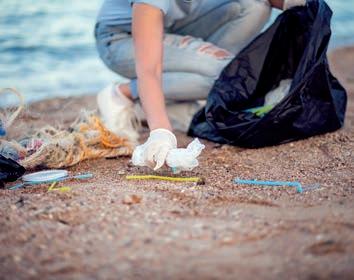
MARITIME VOICE ASEAN | MAY-JUL 2024 23 Source: en.tempo.co
Plastic waste piles up along the Kedonganan Beach area, Badung, Bali. (20/3/2024). ANTARA FOTO/Fikri Yusuf/Spt.
Saifuddin Nasution: Home Ministry
Finalizes Acquisition of Four Helicopters Worth RM600m for MMEA
The Malaysian Maritime Enforcement Agency (MMEA) is set to receive four new helicopters after the Ministry of Home Affairs (KDN) finalized the acquisition of these aircraft.
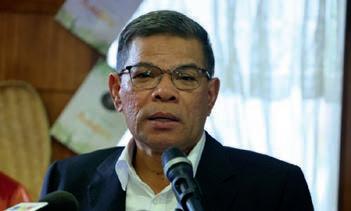
Home Minister Datuk Seri Saifuddin Nasution Ismail said that the proposal for the acquisition of the assets, which will cost approximately RM600 million, has also been submitted to the Ministry of Finance. — Bernama pic
Minister Datuk Seri Saifuddin Nasution Ismail said that the proposal for the acquisition of the assets, which will cost approximately RM600 million, has also been submitted to the Ministry of Finance.
“The next step will be to visit the premises of the helicopter manufacturing companies that have been shortlisted before making a purchasing decision,” he told a press conference after attending a meeting with MMEA officials here.
Also present were Deputy Home Minister Datuk Seri Shamsul Anuar Nasarah and acting director-general of MMEA Datuk Saiful Lizan Ibrahim.
Meanwhile, Saifuddin also said that they are currently assessing whether to accept a patrol vessel that is being offered as a donation by the United States Coast Guard for use by MMEA.
The minister said the offer was made during his working visit to the United States last September.
Saifuddin said that this offer signifies close cooperation between the two countries in sharing information and expertise.
“The US Coast Guard sees Malaysia as a country with expertise in handling maritime security issues due to our extensive maritime borders, spanning 590,000 square kilometers, besides the increasingly complex maritime crimes,” he said.
He also stated that several MMEA officers and personnel have been sent to the United States to assess the capabilities of the patrol vessel and compile a report before any decision is made.
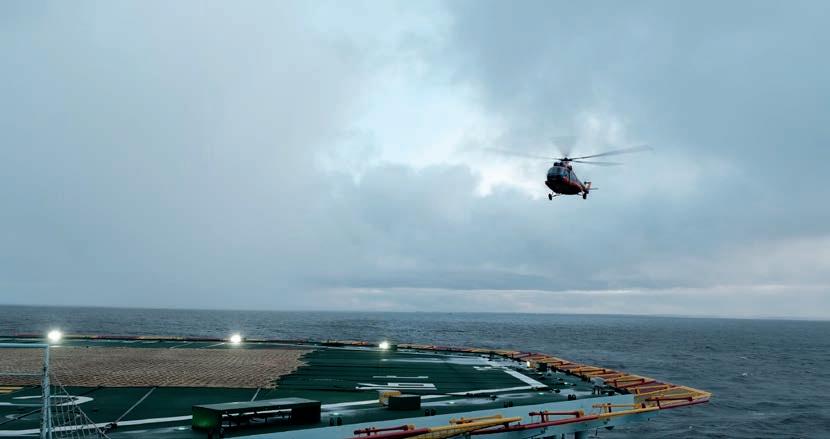
24 MARITIME VOICE ASEAN | MAY-JUL 2024 Source: www.malaymail.com
NAVAL DEFENSE & MARITIME SECURITY

MMEA to Receive Remaining 2 Ships Within 2 Years
Home minister Saifuddin Nasution Ismail says the maritime force will also receive four new helicopters costing RM600 million within 18 months to help in patrolling.
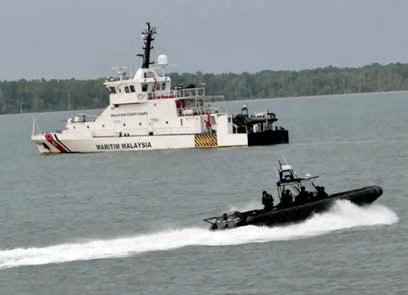
The Malaysian Maritime Enforcement Agency (MMEA) is expected to receive the remaining two offshore patrol vessels (OPVs) in less than two years, says home minister Saifuddin Nasution Ismail.
He said the estimated timeframe takes into account the current progress of the construction of OPV2, which is now 75% completed, while OPV3 is half completed.
“Although it deviates from the original delivery schedule, my ministry is committed to completing the project to ensure the readiness of the nation’s maritime security assets is at an optimum level,” he said after observing the Op Khas Pagar Laut operation onboard MMEA vessel Tun Fatimah in the waters of Selangor here today.
Saifuddin said MMEA is also set to receive four new helicopters involving an allocation of RM600 million within 18 months.
In January, home ministry secretary-general Ruji Ubi was reported as saying that the acquisition of these helicopters was expected to be completed within two to three years.
All of them are to be stationed at the Maritime Air Operations Centre in Sandakan, Sabah, to strengthen MMEA operations there.
Commenting on Op Khas Pagar Laut, Saifuddin said after its March 12 launch, 63 arrests have been made, involving seizures worth RM5 million.
He said those arrested were involved in smuggling of cooking oil, gas and contraband items such as untaxed cigarettes. Some foreigners were caught for fishing in Malaysian waters.
Op Khas Pagar Laut, which runs until April 30, is being conducted to curb cross-border criminal activities in the country’s maritime areas in conjunction with Ramadan and the Aidilfitri festive season.

MARITIME VOICE ASEAN | MAY-JUL 2024 26 Source: www.freemalaysiatoday.com
An MMEA offshore patrol vessel taking part in an operation off Klang today. (Bernama pic)
NAVAL DEFENSE & MARITIME SECURITY


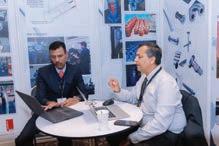


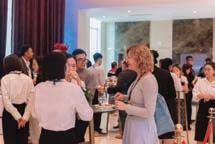
Hamid Retires as MMEA Chief After 42 Years of Service
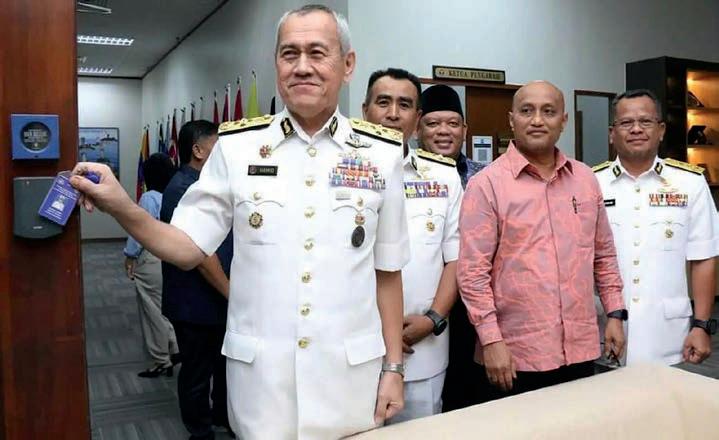
Malaysian Maritime Enforcement Agency says the directorgeneral has succeeded in instilling the core values of integrity and knowledge in his men.
Malaysian Maritime Enforcement Agency (MMEA) directorgeneral Hamid Amin will retire
MMEA said Hamid, who assumed the post of MMEA’s sixth director-general on Nov 6, 2023, had instilled core values in all agency personnel by focusing on integrity and knowledge.
In a statement, it said that although Hamid only helmed the agency for five months, he had previously served as deputy director-general and in other positions.
It said he had achieved great success for the team, improving operations along the country’s maritime borders and taken charge of new assets.

“This includes the acquisition of four medium-lift helicopters, a multipurpose mission ship, two new generation patrol craft, two special action force interceptor boats, five rigid hull fender boats and an offshore patrol vessel from the US Coast Guard,” it said.
The patrol vessel, renamed KM Tun Fatimah, was put into operation in Sarawak waters early this year.
Hamid also launched the MMEA strategic plan 2023-2033 to enable the agency to become the regional center of excellence for maritime enforcement, and search and rescue.
Hamid had previously served in the navy before being transferred to MMEA on Oct 31, 2005.
He was honored with a farewell ceremony at the MMEA headquarters in Putrajaya.
MARITIME VOICE ASEAN | MAY-JUL 2024 28 Source: www.freemalaysiatoday.com
NAVAL DEFENSE & MARITIME SECURITY
Malaysian Maritime Enforcement Agency director-general Hamid Amin clocking out for the last time. (Facebook pic)
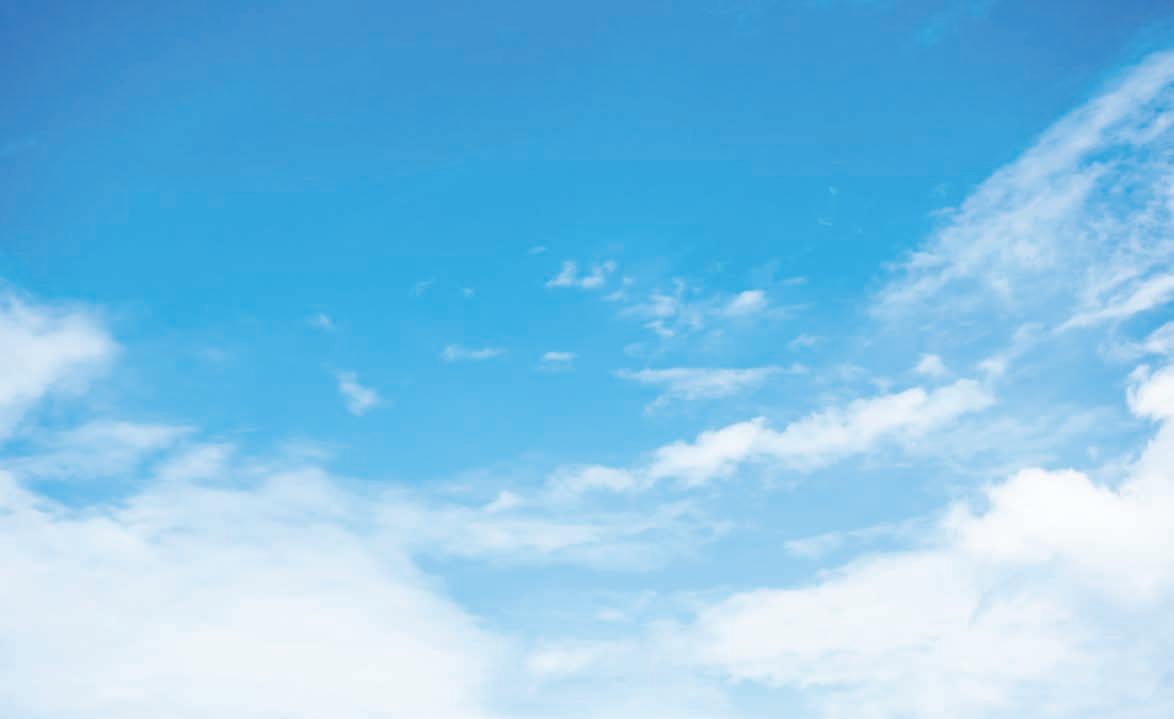



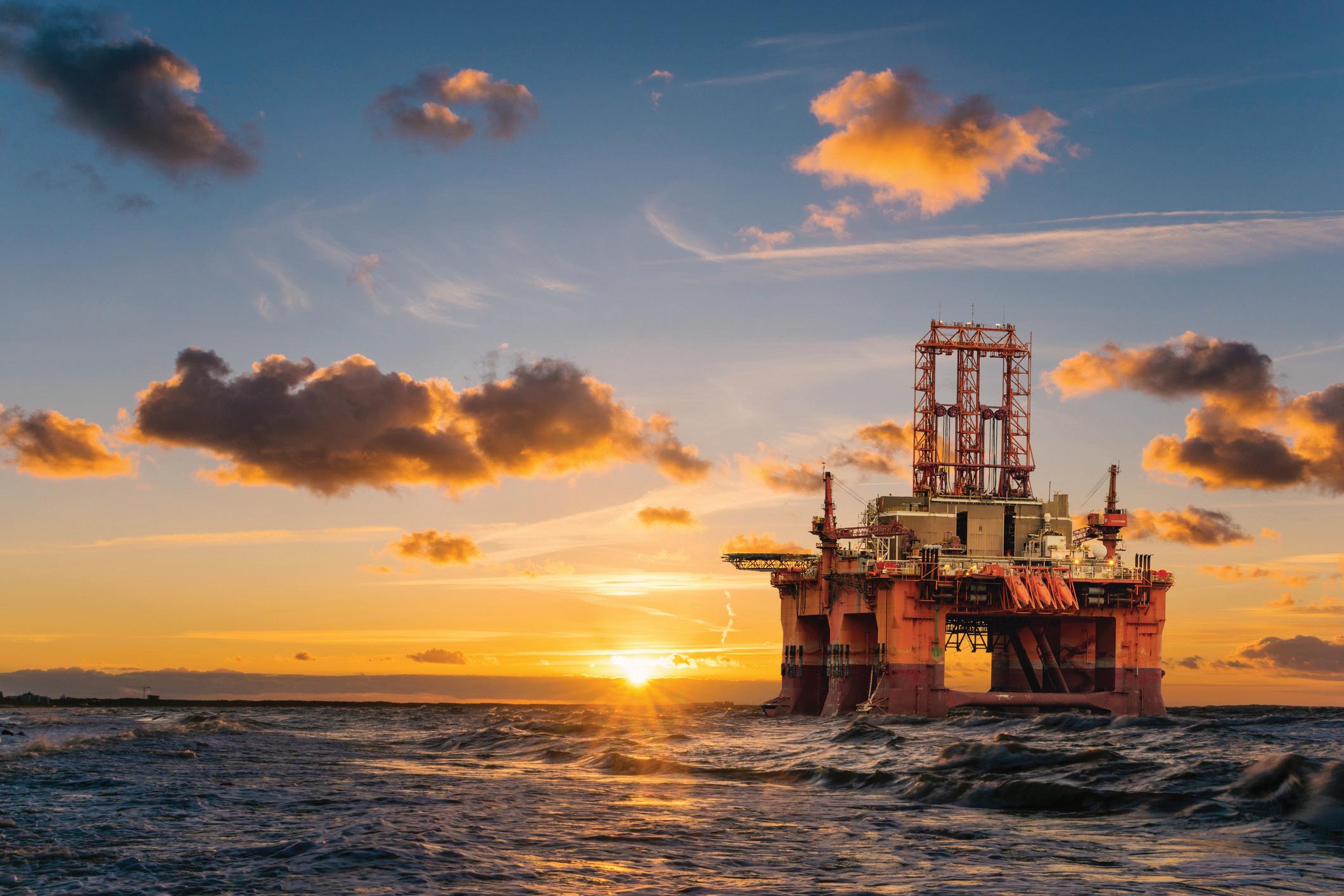




THAILAND’S MOST SUCCESSFUL OIL & GAS AND PETROCHEMICAL EXHIBITION! 13th Edition 2024 www.oilgasthai.com #OGET Oil & Gas Thailand Exhibition 16-18 OCTOBER 2024 BITEC, BANGKOK, THAILAND Endorsed By Organized By Officially Supported By UP TO 70% SUBSIDY FOR SINGAPORE COMPANIES UNDER SINGAPORE PAVILION! : (+66) 88 972 0868 Tel : (+66) 2 513 1418 Email : info@fireworksthai.com For Exhibit Space Reservation
Malaysia Can Benefit from Telenor’s 5G Technology Experience in the Maritime Sector — Fahmi
Minister of Communications Fahmi Fadzil together with the Malaysian delegation made their first visit to the state-of-the-art remote operations center (ROC) to experience for themselves the advancement of 5G technology in Norwegian maritime operations in Horten Harbour.
The advancement of 5G technology in Norwegian maritime operations provided by Telenor Maritime could benefit the Malaysian shipping industry, especially in the oil and gas as well as logistics sectors, according to Communications Minister Fahmi Fadzil.
The minister visited a state-of-the-art remote operation center (ROC) in Horten Harbour, near here where Telenor Maritime showcased its autonomous vessel and how different communication links, including a private 5G system, connect the vessel to the ROC.
Telenor Maritime provides a high-speed connection in a closed and secure network to Massterly, the world’s first company to operate autonomous vessels at sea.
According to Fahmi, there are some practical applications of private 5G network usage, particularly involving the operation of autonomous vessels that Malaysian corporations could leverage on.
“Some clever use of the technology, which I can see perhaps some of it being adopted in Malaysia... there are probably some regulatory aspects that we need to pay attention to, and also maybe some potential use cases.
“Given that we have not yet fully rolled out private 5G networks in Malaysia, I think there is a lot of potential and in the long run, it benefits Malaysia,” he said.
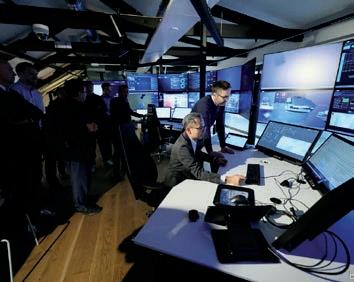
Fahmi is currently on a two-day working visit to Norway to attend the “Next Generation Communications Roundtable” organized by Telenor Group from Feb 29 until March 1, 2024 here.
Meanwhile, Telenor senior vice-president and deputy head of Asia, Håkon Bruaset Kjøl noted that Malaysia has a lot of experience with strong industries which could make use of such partnerships to succeed in taking the full advantage of 5G.
To enable this, collaboration among the whole ecosystem is vital, he said.
“The 5G network is not necessarily a consumer network only, as most probably it is the industrial internet and the use cases coming out of 5G that will help businesses.
“It will not only optimize their own operations but should be embedded in solutions being provided to other businesses to ensure that happens... it is important to bring all partners together,” he added.
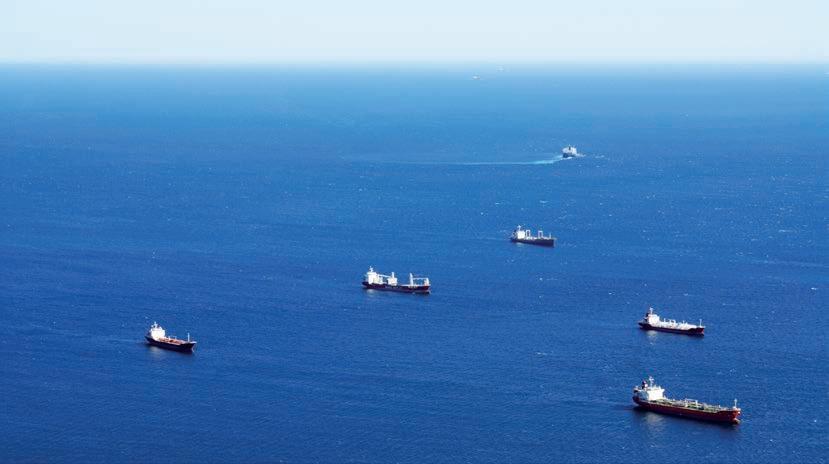
30 MARITIME VOICE ASEAN | MAY-JUL 2024 PRODUCT & TECHNOLOGY NEWS
Source: theedgemalaysia.com


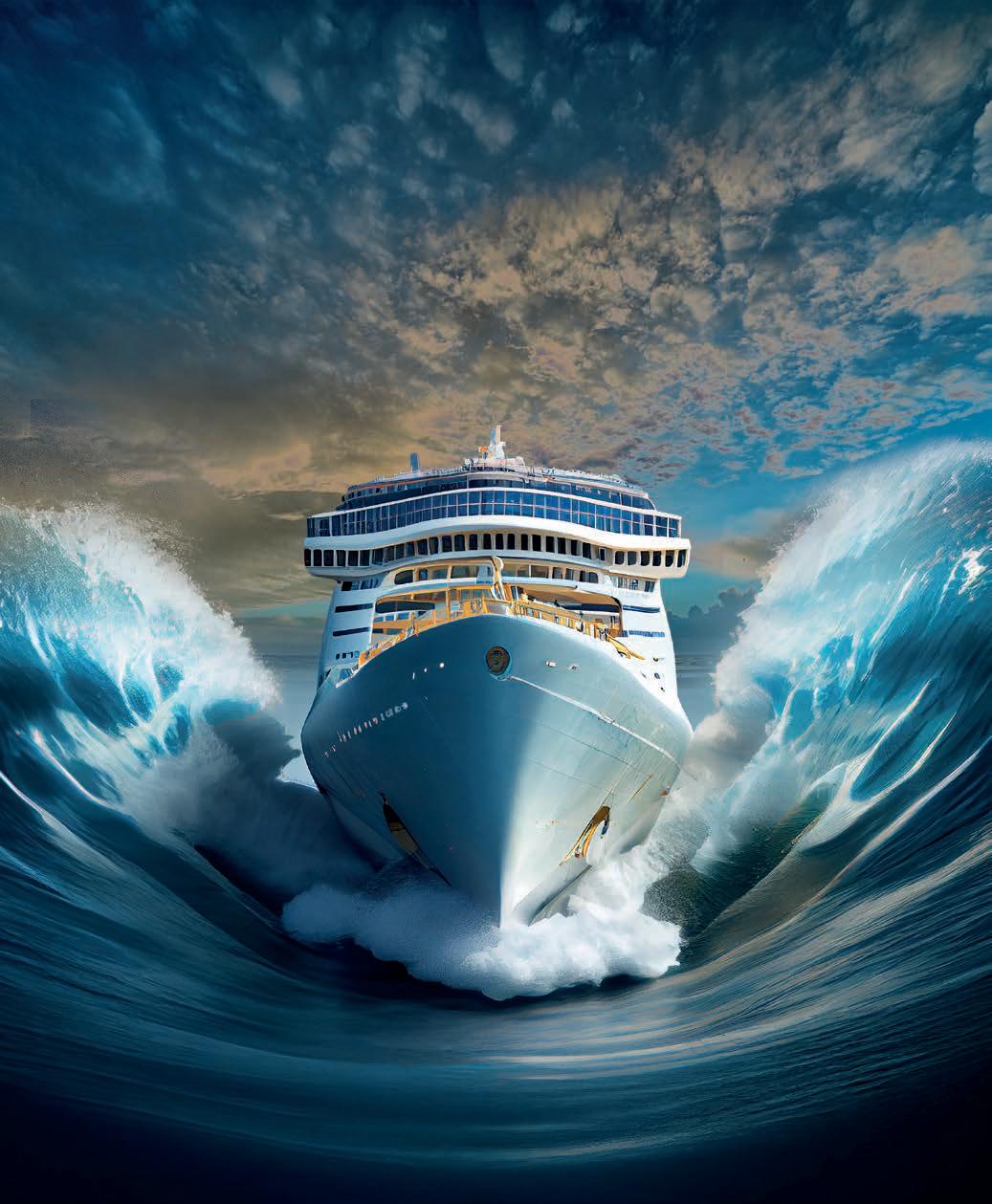













BANGLADESH’S LARGEST MARITIME AND OFFSHORE EXHIBITION Date: 7-9 November 2024 Venue: International Convention City Bashundhara (ICCB), Kuril Bishwa Road, Dhaka Associate Partners Event Partner Organized By International Alliance 6th Edition 4 4

Commentary: Nusantara Can Unlock Indonesia’s Maritime Potential
Indonesia’s new capital city can increase economic interest in eastern Indonesia and provide an alternative route that connects the Indian and Pacific Oceans, says an S Rajaratnam School of International Studies fellow.
As the dust settles over the 2024 Indonesian general election, Prabowo Subianto and Gibran Rakabuming Raka have claimed victory as the next president and vice president.
The former three-star general and the son of the incumbent president have promised to continue President Joko “Jokowi” Widodo’s ambitious economic development and legacy infrastructure projects, including moving the administrative capital from Jakarta to Ibu Kota Nusantara in East Kalimantan.
This relocation project is not just a political move to secure the legacy of President Jokowi. With some strategic consideration, Prabowo could turn the new capital city and its surrounding maritime domain into a new regional - and even globalmaritime hub.
The government is planning to build two ports within the vicinity of Nusantara, Kuala Samboja and Marangkayu, which will support the development of logistics and industries around the area.
To realize Nusantara’s potential, Indonesia must present a balanced approach in both its maritime security and economic
policies, expanding connectivity beyond its archipelago and seizing regional opportunities.
PRABOWO’S CALL TO REINFORCE INDONESIAN SOVEREIGNTY
Throughout the next five years of his presidency, Prabowo is expected to project Indonesia’s political standing and influence on regional and global issues. He will likely do this through a combination of foreign policy and defense diplomacy, drawing on his experience as Minister of Defense.
Coming from a military background, Prabowo brings with him a realist takes on foreign policy and security issues. Unlike the other two presidential candidates, Prabowo’s campaign rhetoric and official vision statement emphasize maritime affairs, but with an inward-looking focus.
These have included calls for food self-sufficiency through the development of aquaculture and deep-sea fishing, empowering domestic maritime logistics through improved port infrastructure, expanding maritime transport links and investing in maritime human resources. All these statements rest upon the new capital city’s establishment as the future center of growth outside of Java.
Prabowo’s call to reinforce Indonesian sovereignty as a unitary state is distinctive. His take on the South China Sea issue in
32 MARITIME VOICE ASEAN | MAY-JUL 2024 SPECIAL INSIGHT
the third presidential candidate debate on Jan 7 did not offer a strategy on how Indonesia could maintain peace and stability in the area.
Instead, Prabowo stressed that Indonesia must actively build a strong maritime capacity to defend against future issues that may arise across the archipelagic domain.
INDONESIA’S COMMITMENT TO SAFEGUARDING SEA LANES
A stronger defense and security posture would benefit the future capital given its proximity to Indonesia’s neighbors, as well as the second archipelagic sea lane - one of three archipelagic sea lanes designated for international maritime navigation.
At its southern end, the sea lane connects with the Indian Ocean through the Lombok Strait, while its northern end connects to the Sulu Sea and the Pacific Ocean. It is a very strategic maritime sea lane as it serves as an alternative route for ships that are too big to pass through the Strait of Malacca.
Security concerns towards the sea lane once posed by militant groups, such as Abu Sayyaf in the Philippines, have been largely resolved.
Since the signing of the 2017 Trilateral Cooperative Arrangement, trilateral maritime patrols in the Sulu and Sulawesi Seas between Indonesia, Malaysia and the Philippines have corresponded with a sharp drop in armed robberies, kidnappings and maritime terrorism cases.
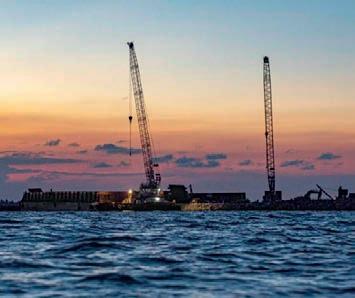
This practical cooperation showcases Indonesia’s commitment to safeguarding important sea lines of communication. Indonesia has also enhanced the existing patrol mechanism by incorporating drone and satellite systems to increase surveillance capability.
A SUPER-HUB
Both Prabowo and Gibran have voiced their support for continuing the new capital city project. Gibran has expressed his commitment to driving Indonesia’s economic transformation by advancing state-of-the-art technology to reinforce the nation’s micro, small and medium enterprises. The duo has pledged to turn Nusantara into a “super-hub” to tap into the digital ecosystem for Indonesia’s economic progress.
This rhetoric is very similar to that of President Jokowi, whose legacy lies in Indonesia’s economic and infrastructure development to connect the archipelago. But Prabowo will likely brandish his mark on Nusantara by driving progress on the surrounding region to prop up the capital city’s economy.
There has already been progress with the development in Balikpapan which would serve as Nusantara’s main commercial driver given its proximity to the new capital, as well as the Makassar New Port project, slated to be the biggest commercial port in eastern Indonesia.
The establishment of Nusantara is not only an attempt to shift the administrative capital from Java to Kalimantan. A developed Nusantara region will boost the commercial traffic that runs through the second archipelagic sea lane, increasing economic interest in eastern Indonesia and providing an alternative route that connects the Indian and Pacific Oceans.
Should the new president successfully seize this opportunity, a global maritime hub could emerge right in the middle of the Indo-Pacific.
Gilang Kembara is Research Fellow at the S Rajaratnam School of International Studies (RSIS). This commentary first appeared on East Asia Forum.
The above comments and opinions in the article are the author's own and do not necessarily represent Maritime Voice Asean Magazine's view.
MARITIME VOICE ASEAN | MAY-JUL 2024 33
Source: www.channelnewsasia.com
Construction equipment at the site of the port at the Kalimantan Industrial Park Indonesia (KIPI) in Mangkupadi, North Kalimantan, Indonesia, Aug 24, 2023. (AP Photo/Yusuf Wahil)
Green Marine: Decarbonising the Shipping Sector
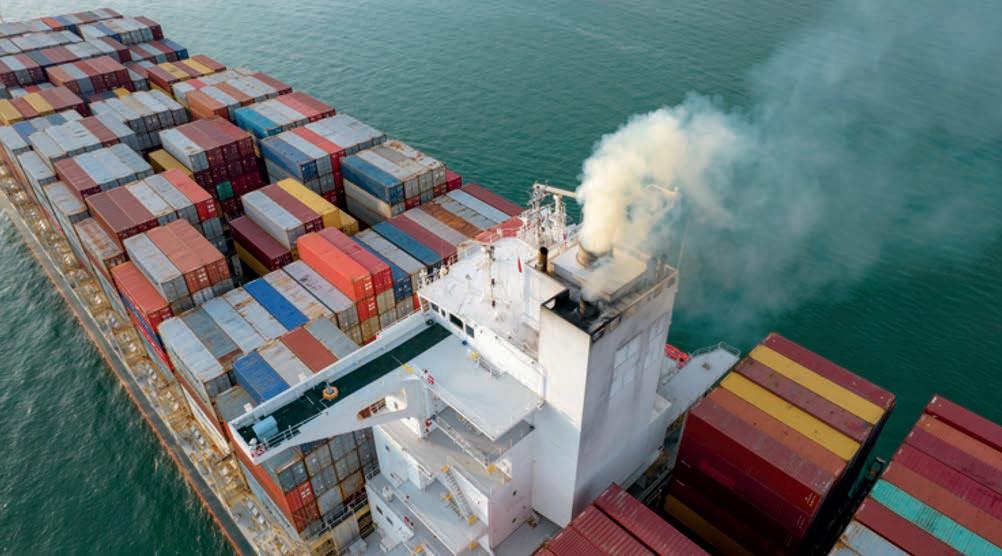
If the shipping industry - which accounts for 3 per cent of global greenhouse gas emissions - was a country, it
polluter - stock.adobe.com
Shipping is a hugely energy-intensive industry that underpins the global economy, with no silver bullet to turn the sector green.
Given it accounts for about 90 per cent of world trade, shipping’s 3 per cent share of global greenhouse gas emissions could be seen as decent business. Nonetheless, that 3 per cent translates to around one billion tonnes of CO2 each year. If the shipping industry was a country, it would rank as the sixth worst polluter in the world, behind only China, USA, India, Russia and Japan.
Unlike a country, however, the maritime sector cannot rely on electrification to kickstart its energy transition. Some short haul ferries and coastal vessels are already adopting battery electric, but ocean-going tankers and container ships won’t be following suit any time soon. As new EU emissions regulations come into force – and with an International Maritime Organisation (IMO)
net zero target of 2050 on the horizon – shipping operators are exploring a patchwork of different solutions to chip away at the sector’s heavy carbon footprint.
“There are a lot of opportunities in shipping to reduce energy consumption,” Juha Kytölä, director of R&D and Engineering at Wärtsilä, told The Engineer. “Already the step from liquid fossil fuels to natural gas use is a great step forward. So, there we can say that we are able to achieve 20 per cent reduction on greenhouse gas emissions.”
Replacing heavy fuel oil with liquid natural gas (LNG) won’t win too many plaudits from environmentalists, but it is symptomatic of the piecemeal approach that the shipping sector is faced with. Traditionally risk averse and slow to adopt new technologies, the maritime industry also operates on thin margins, generally lacking the kind of slush fund cash other sectors may be able to
MARITIME VOICE ASEAN | MAY-JUL 2024 34 SPECIAL INSIGHT
would be the world’s sixth worst
funnel into decarbonization efforts. Add in ships with lifecycles that can run over multiple decades, and you can see why the sector is taking the long view on decarbonization.
Producing ammonia from e-based or electrically produced hydrogen…is a really sustainable solution for shipping or other areas where power and energy is needed
A recent report from Wärtsilä outlined what that extended pathway to net zero shipping could look like, with different flavors of sustainable fuels powering the journey at various stages. According to the company, LNG will act as a transition fuel for the near future, with the use of biofuels expanding in the 2030s.
“Many plants already in the world are actually creating biogas,” said Kytölä. “So, the same assets, the same ship, using natural gas can start operating with biogas with no modifications. Or they can start to blend in the biogas into the natural gas and by that get the gradual positive development in decarbonization.”
Wärtsilä expects the supply of biofuels to grow in the coming years and has designed marine engines with them in mind, capable of operating with a variety of fuel inputs. In time, it anticipates blue fuels – derived from hydrocarbons but with carbon capture – will be the next step in decarbonization. These blue fuels, including blue ammonia, will help bridge the gap to green fuels, which the company predicts will not be available at scale until the late 2030s at the earliest.

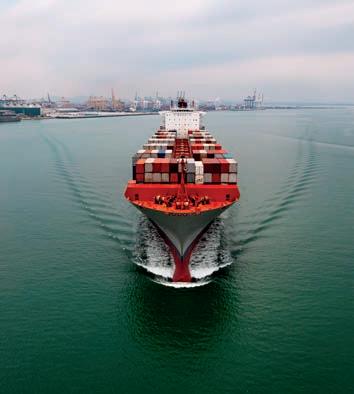
“Ammonia is a great chemical because it does not contain carbon at all,” said Kytölä. “Producing ammonia from e-based or electrically produced hydrogen…is a really sustainable solution for shipping or other areas where power and energy is needed.”
Whereas biofuels can act as a ‘drop-in’ replacement for existing petroleum products, the same cannot be said for ammonia. The chemical is very much a known quantity in terms of handling and storage, with an existing global market of around 150 million tonnes per year. This market currently relies almost exclusively on fossil fuel feedstocks, the ‘grey’ ammonia going on to supply the fertilizer market as well as industrial applications including plastics, explosives and synthetic fibers. But giving ammonia a new lease of life as an energy vector throws up several challenges.
“It’s a good energy carrier,” said Kytölä. “However, the energy density in ammonia is not as good as it is with fossil liquids like diesel. It takes in the ship around 3.8 times more space…so you need a bigger tank.”
Asking ship owners to dedicate nearly four times more space to carrying a new, more expensive fuel than they currently use sounds like a tough pitch. But Wärtsilä and its customers know which the way the wind is blowing, and in November 2023 the company launched the marine sector’s first commercially available 4-stroke ammonia engine. Based on the existing fueladaptable Wärtsilä 25, the ammonia-capable engine is said to reduce emissions by more than 70 per cent compared to diesel, despite needing a bit of assistance to get going.
MARITIME VOICE ASEAN | MAY-JUL 2024 35
“When it comes to the combustion behavior of ammonia, ammonia is what we call a lazy fuel,” said Kytölä. “Compared to diesel fuel or gas fuel, some more energy needs to be put there to get it combusting…but with good control and good ignition, we can get very, very smooth combustion.
“We have tested combusting in gaseous mode, and we have also tested combustion in liquid mode, so that we learn which would be the best for the for the operations.”

For ammonia-powered shipping to be sustainable in the long term, the chemical (NH3) will need to be produced using renewable electricity. The first step is to split green hydrogen from water using electrolysis. More green electricity is then needed to power the Haber process, where the hydrogen and nitrogen (harvested from air, of which it makes up 78 per cent) are reacted together at high temperature and pressure to produce ammonia.
While other electrically derived or ‘e’ fuels such as green methanol are also being explored by the maritime sector, ammonia currently looks the likeliest hydrocarbon replacement. A 2024 study from Oxford University found that just 10 regional hubs supplying green ammonia could decarbonize up to 60 per cent of global shipping emissions. The Oxford team estimated that green ammonia demand in 2050 could be three to four times the current grey ammonia output – approaching somewhere close to a billion tons per year.
Virtually all of this green ammonia production is predicted to lie within 40° latitudes North/South, with the largest investment needed in Australia to supply the Asian markets. Production clusters are also predicted in Chile to supply South America,
California to supply the Pacific coast of the US, North-West Africa to meet European demand, and the southern Arabian Peninsula to meet local demand as well as parts of south Asia. The Oxford study estimated that $2 trillion will be needed to transition to a green ammonia fuel supply chain by 2050.
“Shipping is one of the most challenging sectors to decarbonize because of the need for fuel with high energy density and the difficulty of coordinating different groups to produce, utilize and finance alternative fuel supplies,” said René Bañares-Alcántara, Professor of Chemical Engineering in at Oxford.
“Under the proposed model, current dependence upon oilproducing nations would be replaced by a more regionalized industry; green ammonia will be produced near the equator in countries with abundant land and high solar potential then transported to regional centers of shipping fuel demand.”
Some aspects of the ammonia supply chain are of course already mature, but using the chemical as a fuel throws up plenty of technical hurdles. For its part, Wärtsilä has invested in R&D around ammonia logistics, exploring aspects of safety and certification as well as the fundamentals of how to get the fuel from dockside to ship.
“We have had a lot of focus on the safety concept as well,” said Kytölä. “We have developed ways to not only use it in the engine, but we have developed ways how to fill up the tank in a ship - to bunker ships - so to load in ammonia. How to handle the tank systems - we have products now for ammonia tanks. How to lead it from the tanks to the engine and how to create safety around the engine.”
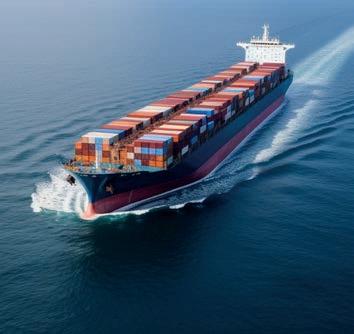
MARITIME VOICE ASEAN | MAY-JUL 2024 36
SPECIAL INSIGHT
The Wartsila 25 ammonia capable engine - Wartsila
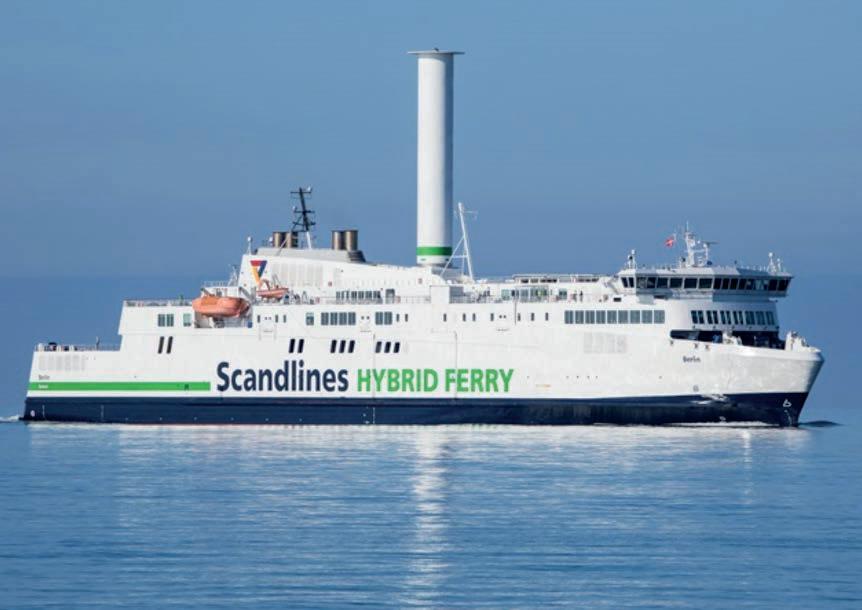
Greener methods of propulsion are understandably the primary focus when it comes to charting a course for net zero shipping, but they are by no means the only game in town. Given the timescales for green fuels expected by Wärtsilä and the wider industry, many operators are eyeing the low hanging fruit available today. With an interim IMO target of 40 per cent emissions reductions below 1990 levels by 2030, the sector is embracing a range of solutions beyond the engine room.
Fleet renewal by itself can have a subtle but powerful effect on emissions, with new ships averaging around 20 per cent energy efficiency improvements on previous generations. And according to Kytölä, it is not just the latest vessels that can aspire to big gains. Digitalization tools and fleet management can have an impact for ships of all ages, tailoring bespoke routes and optimizing speed to maximize efficiency.
“Energy efficiency can be greatly improved and not only for new vessels, but also for existing,” Kytölä said. “There are measures to optimize the use of these assets…they don’t need to rush through the oceans with full speed in order to be too early in the harbor, where they wait for days in order to get their pier place.”
Other efficiency solutions include air lubrication, where a coating of bubbles eases the passage of a ship’s hull through the water. Though results vary from vessel to vessel, it’s claimed the technology can reduce emissions by 10 per cent. Even
more impactful are rotor sails – also known as Flettner rotorswhich use the Magnus effect created by large, vertical spinning cylinders to boost propulsion. It’s claimed rotor sails can reduce fuel consumption and emissions by up to 30 per cent. According to Kytölä, the tools needed to hit the IMO’s 2030 target are readily available today.
“Yes, it is possible,” he said. “All the opportunities and the technologies exist already today. So, 40 per cent is possible.
“I would say that there is a great speed up in very many segments that we see. So, it looks positive…we need both that willingness, but we probably do need to see a little bit of regulations as well. This indeed is taking place already in some of the areas. In the EU there is the Emission Trading Scheme, ETS, being planned.
“And we don’t believe this will stay only in Europe. As in other regulations we’ve seen, other areas will follow.”
Starting from 2024, the ETS obligates all passenger and cargo vessels of 5,000 gross tonnage (GT) and above to account and pay for their emissions when sailing to or from an EU port. Initially, just 40 per cent of a vessel’s CO2 emissions will be liable, but this will rise to 100 per cent by 2027, with methane and nitrous oxide added to the calculations from 2026.
MARITIME VOICE ASEAN | MAY-JUL 2024 37
Rotor sails – also known as Flettner rotors - use the Magnus effect created by large, vertical spinning cylinders to boost propulsion - Rotor Sail
The legislation is meant to apply the ‘polluter pays principle’, meaning that the cost of pollution is borne by those who create it. But with truly green fuels still decades away, the options available to shipping companies to dramatically cut emissions are limited.
“We don’t think that ships are going to run on methanol or ammonia in the next few decades, like 20 years, let’s say. The fuel supply just isn’t there,” said Roujia Wen, co-founder & CTO of maritime tech startup Seabound.
“And even when the supply is ready, that only works for new ships, whereas you’ve got all these existing ships running on the water today. And they’re still burning fossil fuel.”
The solution, according to Seabound, is carbon capture. It recently completed a pilot test of its calcium looping carbon capture technology on a 240m container ship off the coast of Turkey, successfully capturing 78 per cent of CO2 from a portion the vessel’s exhaust gas. Lab tests have demonstrated capture rates as high as 95 per cent.
“We managed to achieve 78 per cent, which we think is already very good, because a lot of the IMO regulations are ramping up every year,” Wen told The Engineer. “95 per cent is sort of our goal to work towards. And it’s been proven possible on landbased calcium looping plants.
“Right now, there’s still not a huge amount of incentive for ship owners to capture all of the emissions onboard a ship. So, 78 per cent - it’s definitely really good from a customer perspective.”
Founded in late 2021, Seabound has already attracted prominent investors, including Y Combinator, Lowercarbon Capital, and Eastern Pacific Shipping. Wen’s background is in theoretical physics, studying at Cambridge. She and fellow co-founder Alisha Fredriksson - both alumni of the Silicon Valley-backed Minerva University - have no formal maritime background, relying instead on a startup mentality that drove them to identify a fundamental problem awaiting a solution.
“We kind of started with the problem rather than a particular technology,” said Wen. “We wanted to solve the problem of maritime decarbonization and we were looking into different ways to capture CO2 onboard a ship.”
From the outset, Wen and Fredriksson observed that other maritime carbon capture systems were separating out the CO2 entirely, which then had to be stored onboard at -50° C and 7 bar. These aren’t quite cryogenic levels, but they’re enough to have significant cost implications.
“That’s just really capital intensive and energy intensive and it’s just really hard to handle liquid CO2 on board ships and hard to discharge them at ports as well,” said Wen.
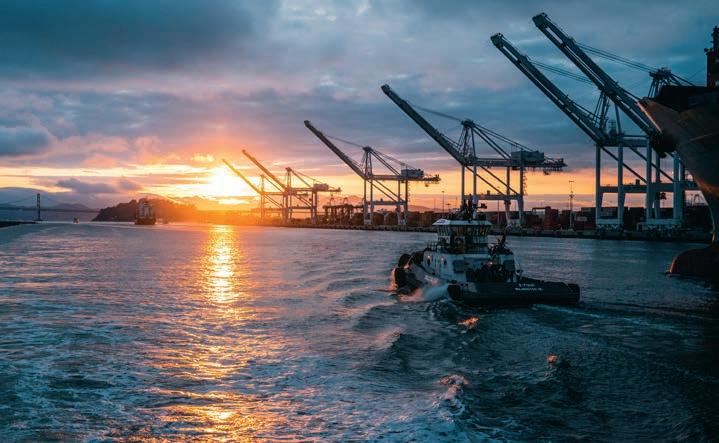
MARITIME VOICE ASEAN | MAY-JUL 2024 38
SPECIAL INSIGHT

Rather than trying to solve the entire process, Seabound instead chose to focus its efforts on the first step of CO2 capture, binding the gas chemically with calcium. Calcium oxide is used as a sorbent to strip CO2 from flue gases. The resulting calcium carbonate pebbles are stored onboard, then offloaded at ports either for further processing to harvest the CO2 or sold for building materials.
“We found that calcium oxide is the best material in terms of the weight ratio for capture of CO2, but also just the technology maturity level and the abundance of the material,” said Wen.
“There is no heat input. So, the sorbent is exothermic. It takes in exhaust at about 300 degrees C, and then through the reaction, it’s going to maintain itself at much higher temperature as its releasing heat during the process.”
Seabound’s onboard reactor is relatively compact. However, the sorbent feedstock and resulting calcium carbonate pebbles will require a small slice of the ship’s capacity. Though this will inevitably have an impact on the economics of commercial shipping, it’s a problem common to virtually all decarbonization technologies. Whether it’s new fuels like ammonia, rotor sails, or CCS, all solutions come with the trade-off of space.
“We estimate that it would take up between one to five per cent of the cargo capacity, depending on how much carbon we capture and the duration of the voyage,” Wen explained.
“I also think that this is a challenge that every single technology provider faces, no matter if you’re swapping fuel, or you’re trying to use batteries or like, like wind assist solutions. They all take up space and weight and that is sort of a common problem.”
Following last year’s pilot, Seabound is now gearing up for a commercial-scale trial. In true startup fashion, the company has ambitious plans, targeting 1,000 ships by 2030 and 10,000 by 2040. And with almost 60,000 vessels of more than 1000 gross tons in today’s merchant fleet, the market opportunity is certainly there. Carbon capture may not be the long-term panacea for shipping’s emissions, but until green fuels become widely available, it may well be the best solution for a sector short on options.
MARITIME VOICE ASEAN | MAY-JUL 2024 39
Source: www.theenginer.co.uk
Seabound’s CCS technology undergoing trials on a container ship - Seabound

Service Tax Set to Weigh on Marine MRO Price Competitiveness, Say Industry Associations
40 MARITIME VOICE ASEAN | MAY-JUL 2024 OFFSHORE NEWS

The introduction of the service tax on repair and maintenance is set to increase operational costs for ship repair, and maintenance, repair and overhaul (MRO) activities, while potentially weighing on domestic industry players’ competitiveness on the global stage.
Beginning March 1, the service tax was widened to include repair and maintenance at a rate of 8%.
In a joint statement, five marine industry stakeholders’ associations said with the escalation of tax costs in Malaysia, they may be forced to revisit their pricing strategies to ensure operational sustainability.
These associations included Association of Marine Industries of Malaysia (Amim), Malaysia Offshore Support Vessel Owners’ Association (Mosva), Sabah and Sarawak Shipowners Association (SSSA), Sarawak Association of Maritime Industries (Samin) and Sibu Shipyards Association (SSA).
“The foremost impact of the new tax regulations is an anticipated increase in operational costs across the board,” said Amim president Adren Siow.
“This stems from the additional tax liabilities that businesses within the marine sector are now required to manage. It is likely that these increased costs may be transferred to customers, potentially elevating the expenses associated with the maintenance and repair of marine vessels,” he said.
Siow said the higher tax rates will make it tough for local marine MRO services providers to stand toe-to-toe with international players.
“If we can get our tax policies to match up more closely with those around the world, we’re not just protecting our industry’s future; we’re also boosting economic development and ensuring that we continue to lead the way in marine services. It’s an exciting opportunity for us to come together and make a positive change,” he said.
Samin president Dr Renco Yong King Hwa also said while Malaysia’s marine MRO sector is recognized for its skills in serving both local and regional fleets, the service tax imposition could increase challenges for the industry to compete on a global scale.
SSA chairman Ting Hua Ang concurred, saying that aside from MRO providers, the service tax is set to pose challenges to Malaysian shipyards’ competitiveness.
“With the escalation of service costs, there is a possibility that local or international shipowners may explore more economical options elsewhere, potentially impacting the volume of business for local entities,” said Ting.
“This scenario underscores the need for strategic adjustments to maintain market competitiveness,” he added.
Mosva president Jamalludin Obeng said the service tax could potentially increase the cost of essential services, thereby affecting overall operational expenses.
“In light of these developments, we find ourselves contemplating the exploration of MRO services beyond our national borders, particularly towards neighboring countries such as Singapore, Indonesia, and Thailand,” he said.
Jamalludin said this consideration is driven by the need to ensure that Mosva members continue to receive cost-effective and efficient services.
“Mosva wishes to emphasize that this contemplation does not diminish our dedication to Malaysia’s maritime industry.
“Instead, it underscores the importance of a collaborative approach in addressing the challenges posed by the new service tax, with the aim of fostering a more competitive and robust maritime sector in Malaysia,” he said.
SSSA chairman Yong Ing Huong said the tax presents a significant concern for the future of domestic logistic transportation provided by Sabah and Sarawak ship owners.
“This new fiscal measure is poised to elevate operational costs, compelling these ship owners to adjust freight rates upwards to sustain their operations. Such a development not only impacts the competitiveness of our domestic logistics sector but also places an additional financial burden on the end consumers,” he said.
MARITIME VOICE ASEAN | MAY-JUL 2024 41

Advertisers Index
Advertisers
Bangladesh International Marine & Offshore Expo (BIMOX) 2024
Danfoss Malaysia Sdn Bhd
Igus Malaysia Sdn Bhd
Indonesia Marine & Offshore Expo (IMOX) 2024
Kohler (distributed by UMW Industrial Power Services Sdn Bhd)
Malaysia International Marine Expo (MIMEX) 2024 Maritime Voice ASEAN
Vietnam International Marine & Offshore Expo (VIMOX) 2024 and Offshore Wind Vietnam 2024
Oil & Gas Thailand (OGET 2024)
Oil & Gas Vietnam (OGAV) 2024
Petronas Marine
Philippines Marine Expo (PHILMARINE) 2024
SDEC (distributed by UMW Industrial Power Services Sdn Bhd)
Thailand Marine & Offshore Expo (TMOX) 2024
International Sales Offices
MALAYSIA | FBI Publications (M) Sdn Bhd
Unit 9-3, Jalan PJU 5/6, Dataran Sunway, Kota Damansara, 47810 Petaling Jaya, Selangor. Tel: (+603) 6151 9178 Whatsapp: (+60) 12 639 4271 E-mail: my@asiafbi.com
SINGAPORE | Fireworks Trade Media Pte Ltd (HQ)
1 Scotts Road, #24-10, Shaw Centre Singapore 228208 Sales Hotline: (+65) 31351211 Email: sg@asiafireworks.com
INDONESIA | PT Fireworks Indonesia
Jl. Suryopranoto No. 11F Kel. Petojo Selatan, Kec. Gambir Jakarta Pusat 10160
Tel: (+62-21) 5088 2917 Email: info@fireworksbi.com
THAILAND | FBI Publications (Thailand)
Website
www.marine-bangladesh.com
marine.danfoss.com igus.my/maritime www.batam-marine.com www.umw.com.my
www.marine-malaysia.com www.maritimeasean.com www.marine-vietnam.com www.offshorewindviet.com
www.oilgasthai.com www.oilgasvietnam.com
www.philmarine.com www.umw.com.my
www.thai-marine.com
Promphan 2 office & Residence, 8th Floor (Office Zone, Room 807) 1 Soi Lat Phrao 3, Lat Phrao Road, Jompol, Chatuchak, Bangkok 10900
Tel: (+66) 2513 1418 Fax: (+66) 2513 1419 E-mail: info@fireworksbi.com
PHILIPPINES | Fireworks Trade Exhibitions and Conferences Philippines, Inc
U1207 12/F The Trade & Financial Tower, 32nd St. Cor. 7th Ave. Bonifacio Global City, Taguig City
Tel: (+63) 2 7902 0900 Sales Hotline: (+63) 2 927 704 0888 Email: phil@fireworksbi.com
Page 31 5 9 25 11 3 IBC 21 29 27 IFC 15 13 IBC



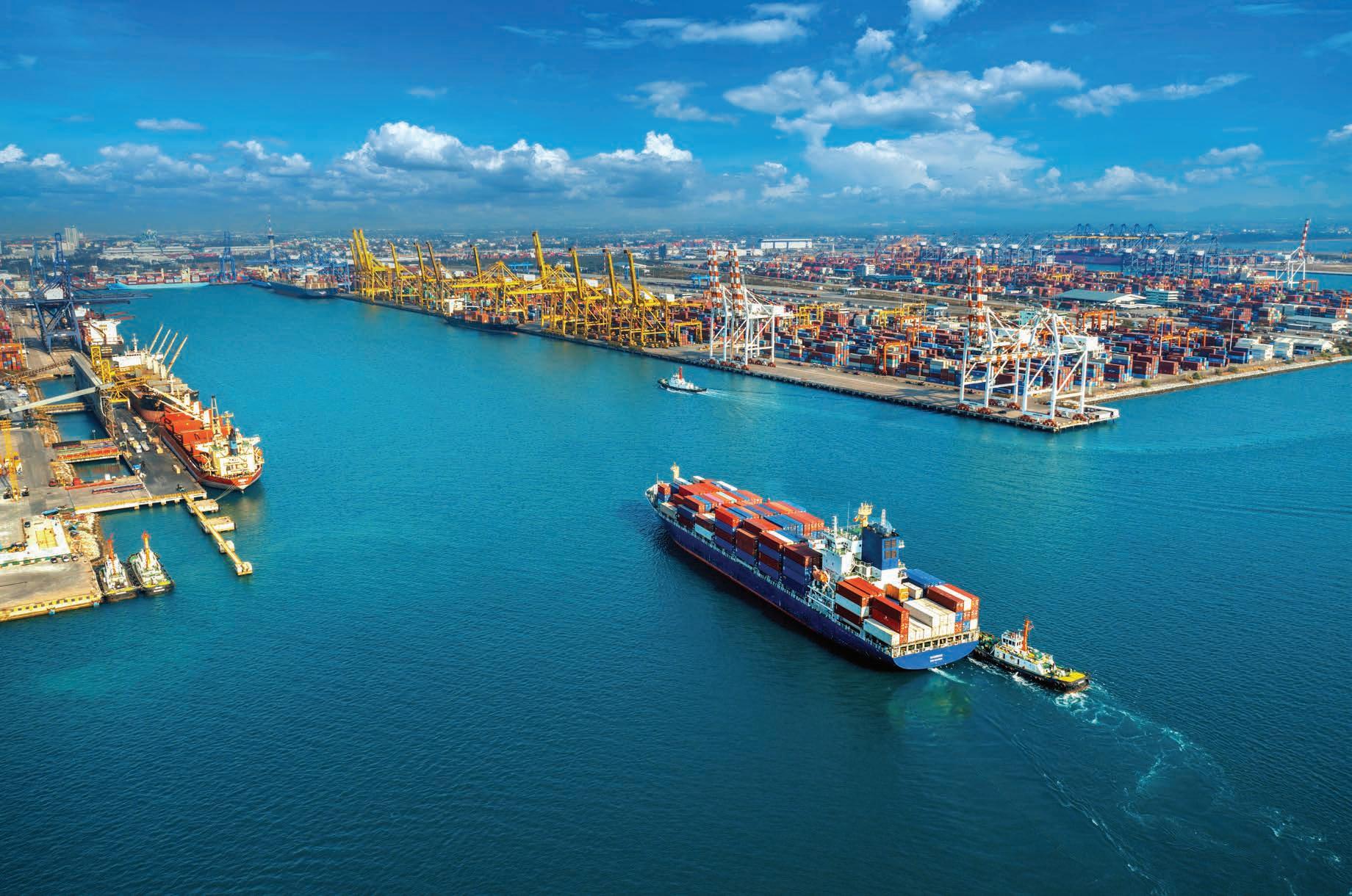
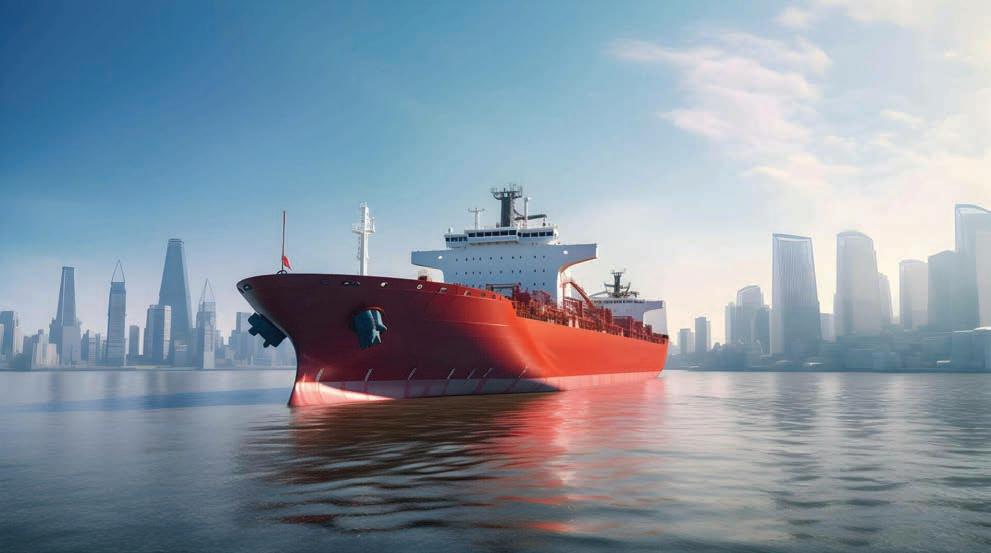




TMOX THAILAND’S LARGEST SPECIALIZED MARITIME AND OFFSHORE EXHIBITION & CONFERENCE 8 TH THAILAND Organized By www.thai-marine.com #TMOX Thailand Marine Expo For Exhibit Space Reservation 16-18 OCTOBER 2024 BITEC, BANGKOK, THAILAND UP TO 70% SUBSIDY FOR SINGAPORE COMPANIES UNDER SINGAPORE PAVILION! Organized By Silver Sponsor Hotline Number : (+66) 88 972 0868 Email : info@fireworksthai.com Tel : (+66) 2 513 1418





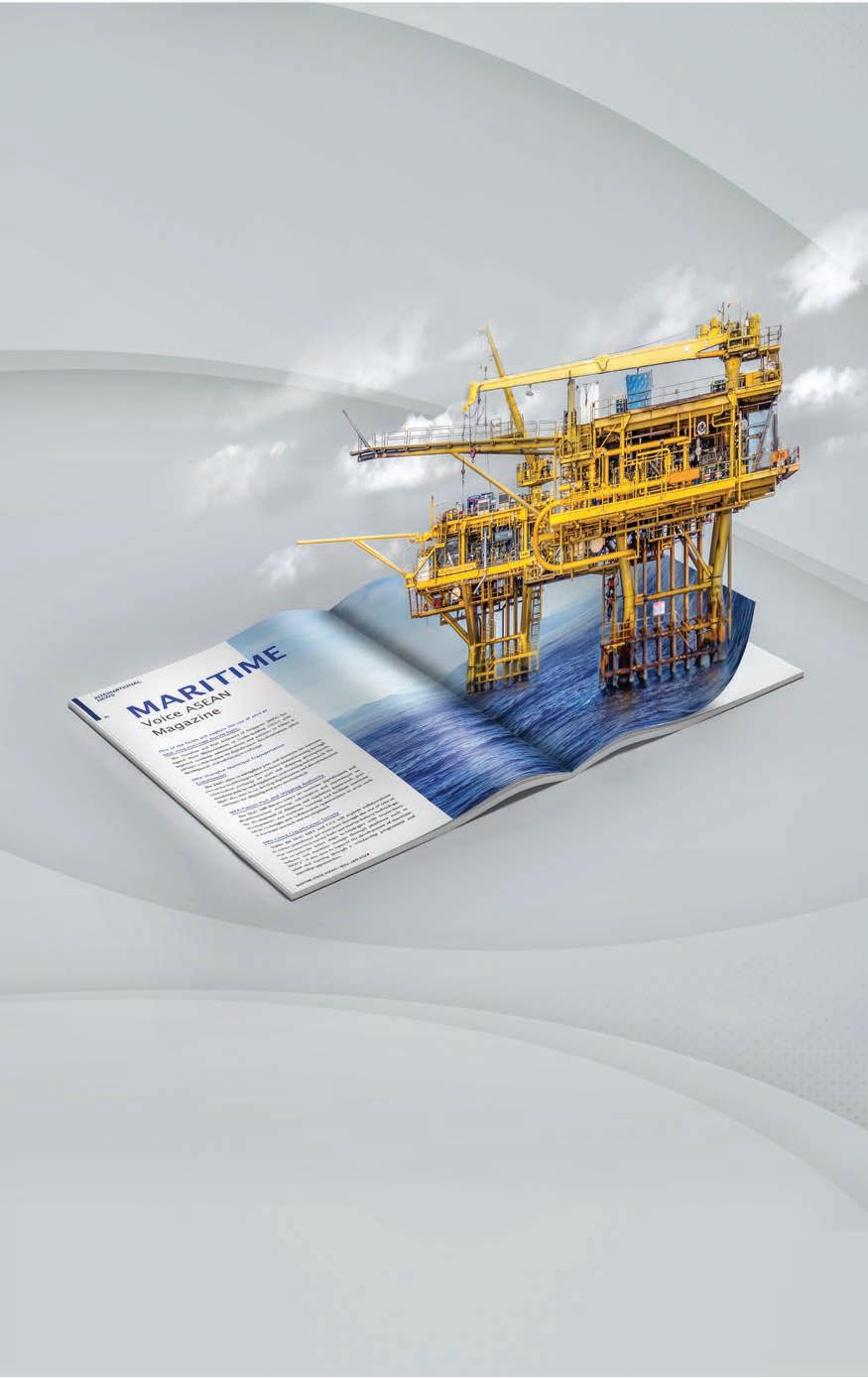
FBI Publications (M) Sdn. Bhd. Unit 9-3, Jalan PJU 5/6, Dataran Sunway,Kota Damansara, 47810 Petaling Jaya, Selangor. Tel: +603 6151 9178 Whatsapp: +601 2639 4271 Email: my@asiafbi.com Website: www.maritimeasean.com Contact Us: Scan for more SUBSCRIBE Reach Out to Qualified Leaders and Key Decision Makers Southeast Asia Circulations Quarterly Publications













 Susan Tricia Editor
Susan Tricia Editor

























































































